APAH West and Central Asia, Global Prehistory, 30,000 - 500 B.C.E., APAH Global Contemporary, APAH Africa 1100-1980 C.E, South, East, and Southeast Asia, APAH Later Eruope and the Americas: 1750-1980 CE, AP Art History: Indigenous Americas , APAH Ear…
1/415
There's no tags or description
Looks like no tags are added yet.
Name | Mastery | Learn | Test | Matching | Spaced |
|---|
No study sessions yet.
416 Terms
Petra, Jordan: Treasury and Great Temple 400 BCE-100 CE
Jordan (Nabataean, Ptolemaic, Roman)
Sandstone, cut rock
religious and funerary
cut out of the cliff face!
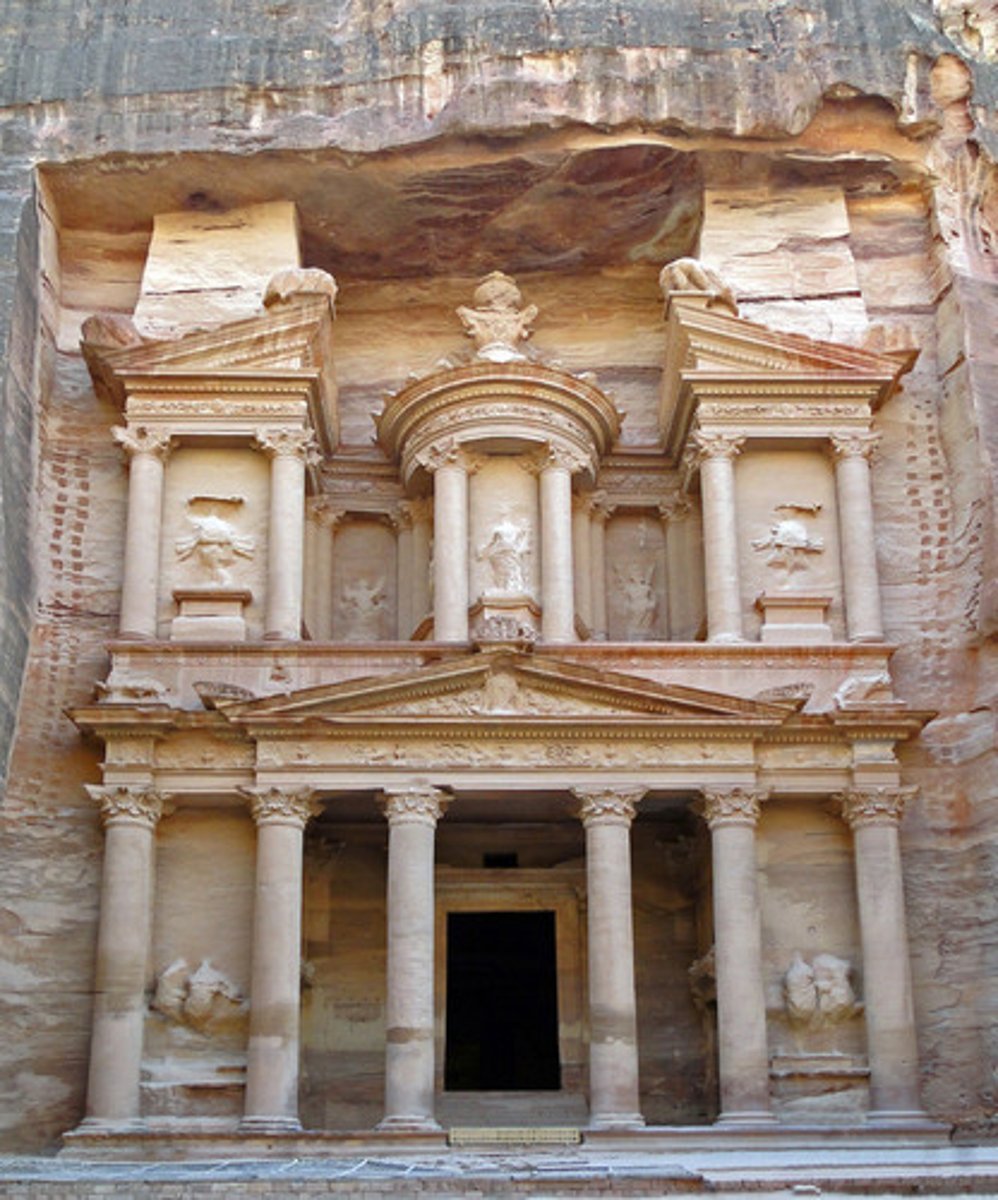
Buddha Bamiyan c. 400- 800 CE
Afghanistan
Sandstone, cut rock
religious
destroyed by Taliban in 2001
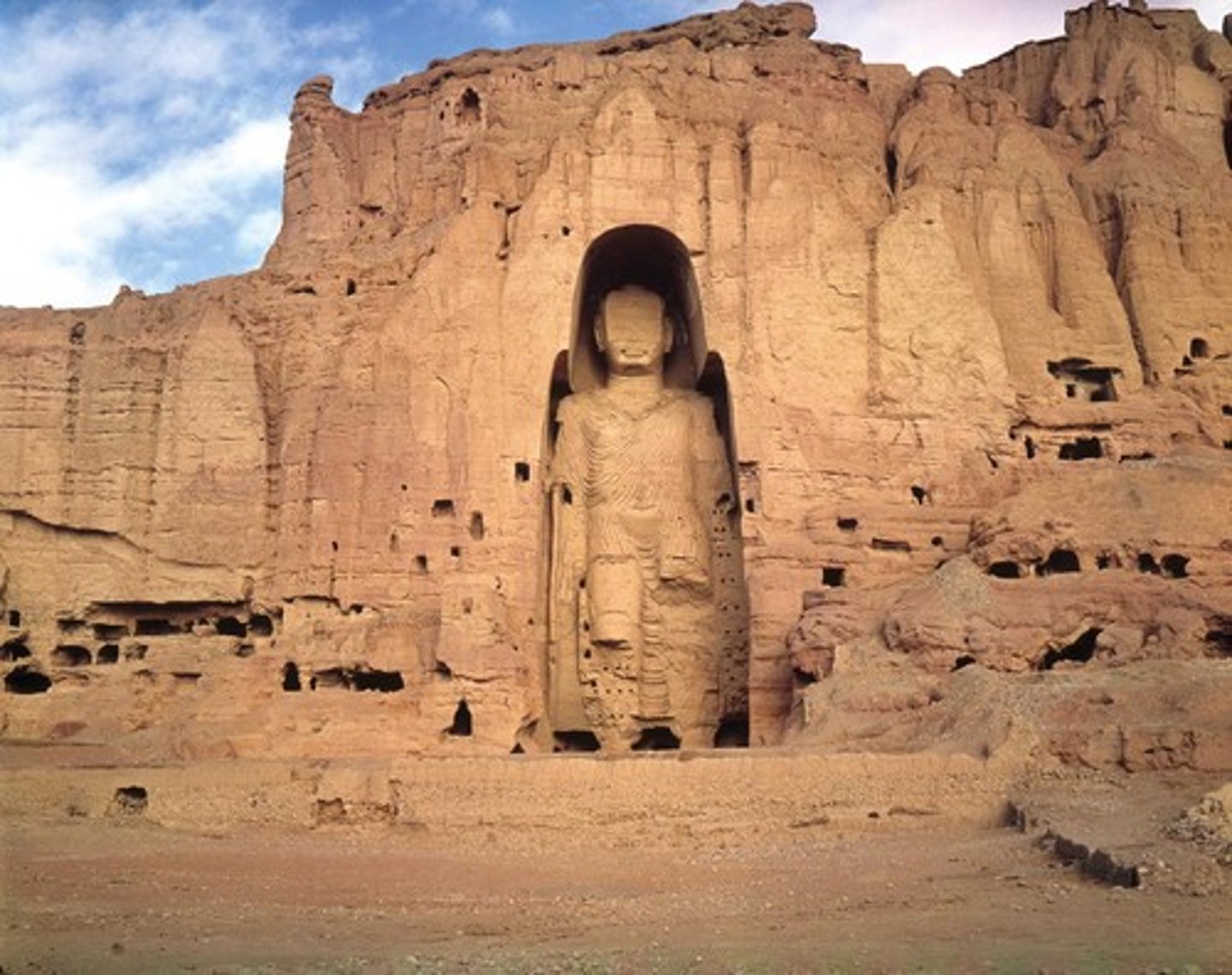
Jowo Rinpoche, Jokhang Temple (brought to Tibet 641 CE)
Tibet
gilt metals, semiprecious stones, paint
brought as a wedding gift, Religious
a shakyamuni, could have been a proxy for the Buddha
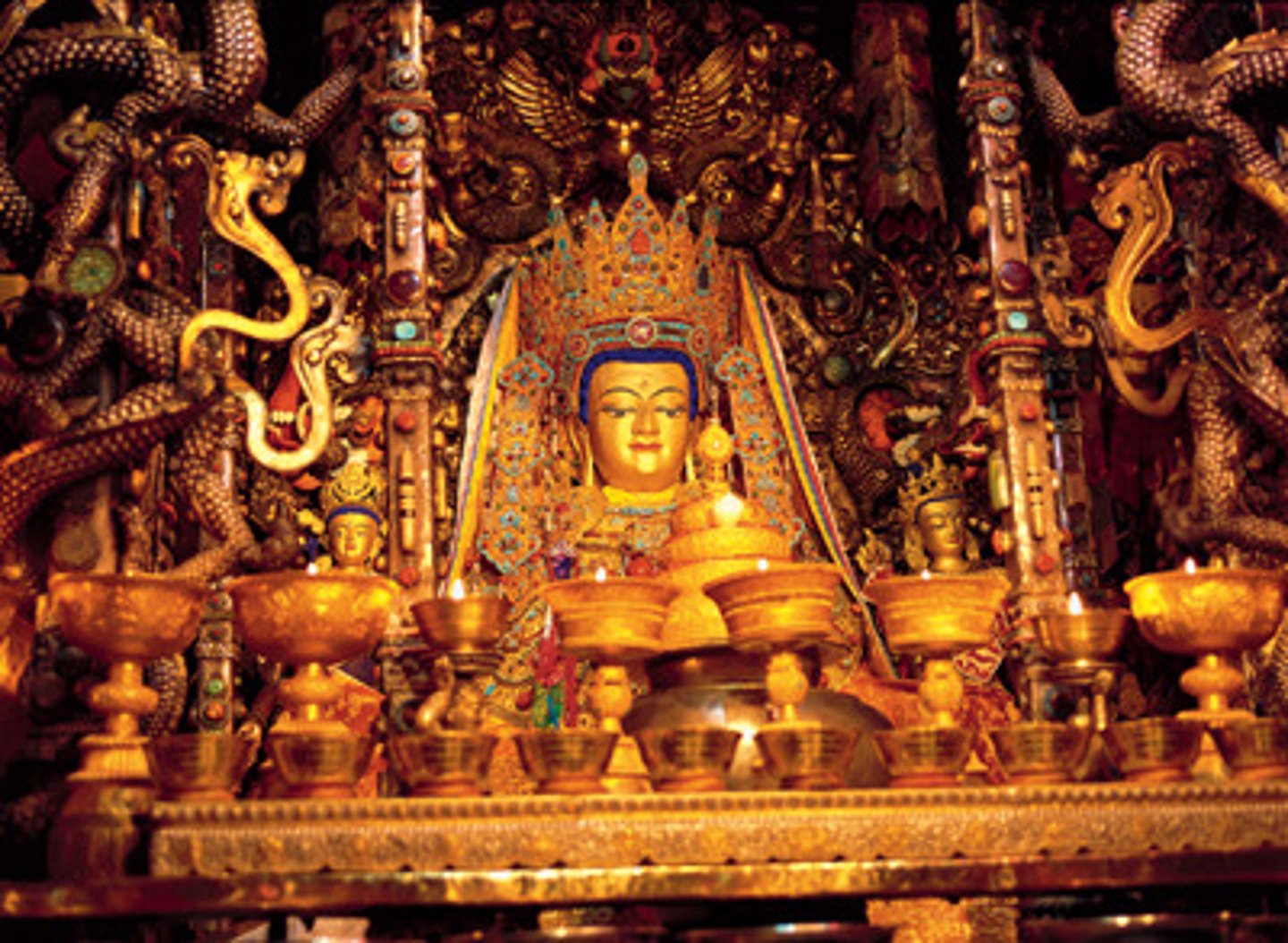
the Kaaba (rededicated by Muhammad 631-632 CE)
Saudi Arabia, Pre-Islamic-Islamic
granite masonry covered w/ silk curtain and calligraphy gold
religious/spiritual
thought to have been built by Abraham and Archangel Gabriel
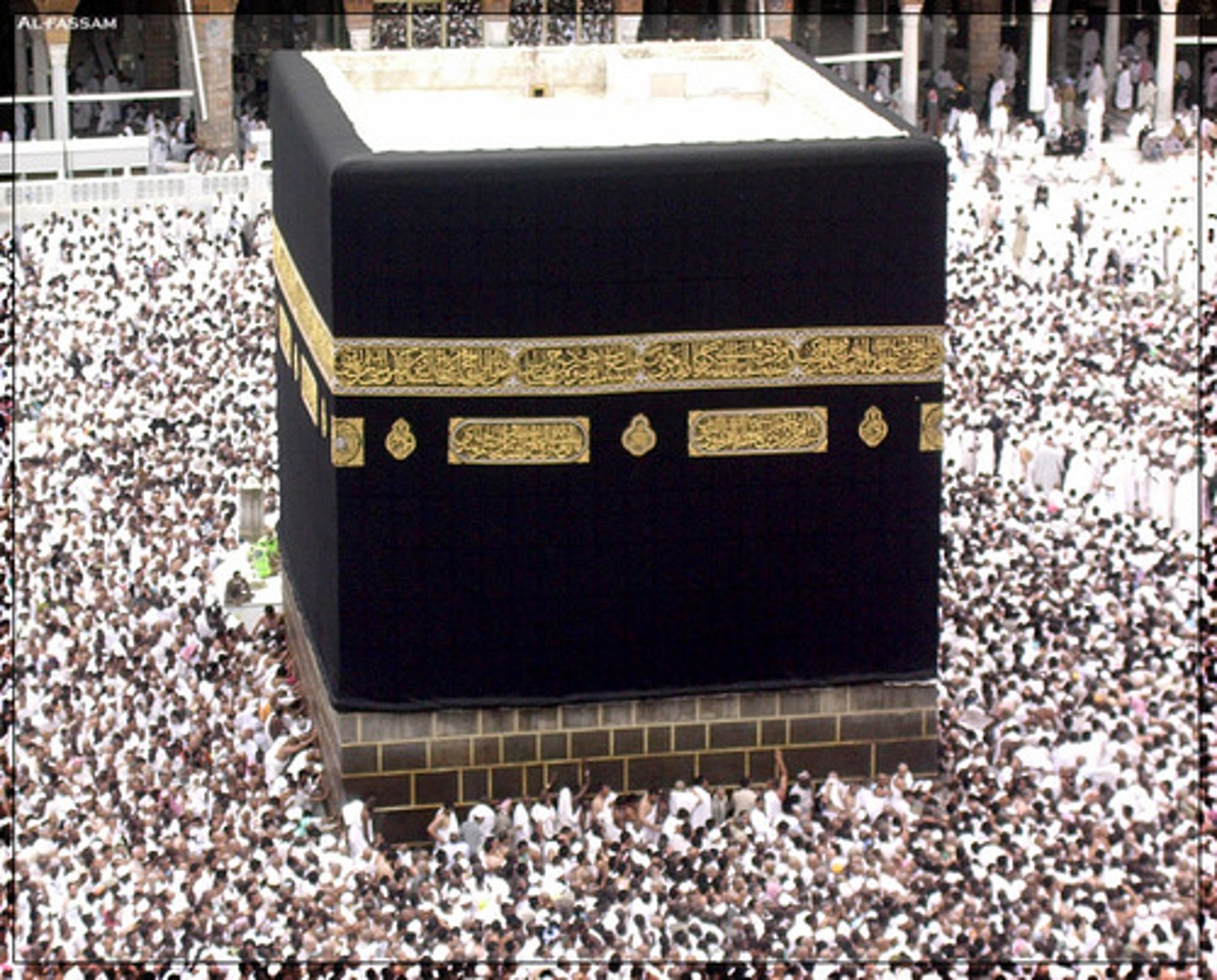
Great Mosque (Masjid-e Jameh) c. 700 CE
Iran, Persian & Islamic
Brick, Stone, Plaster
Religious
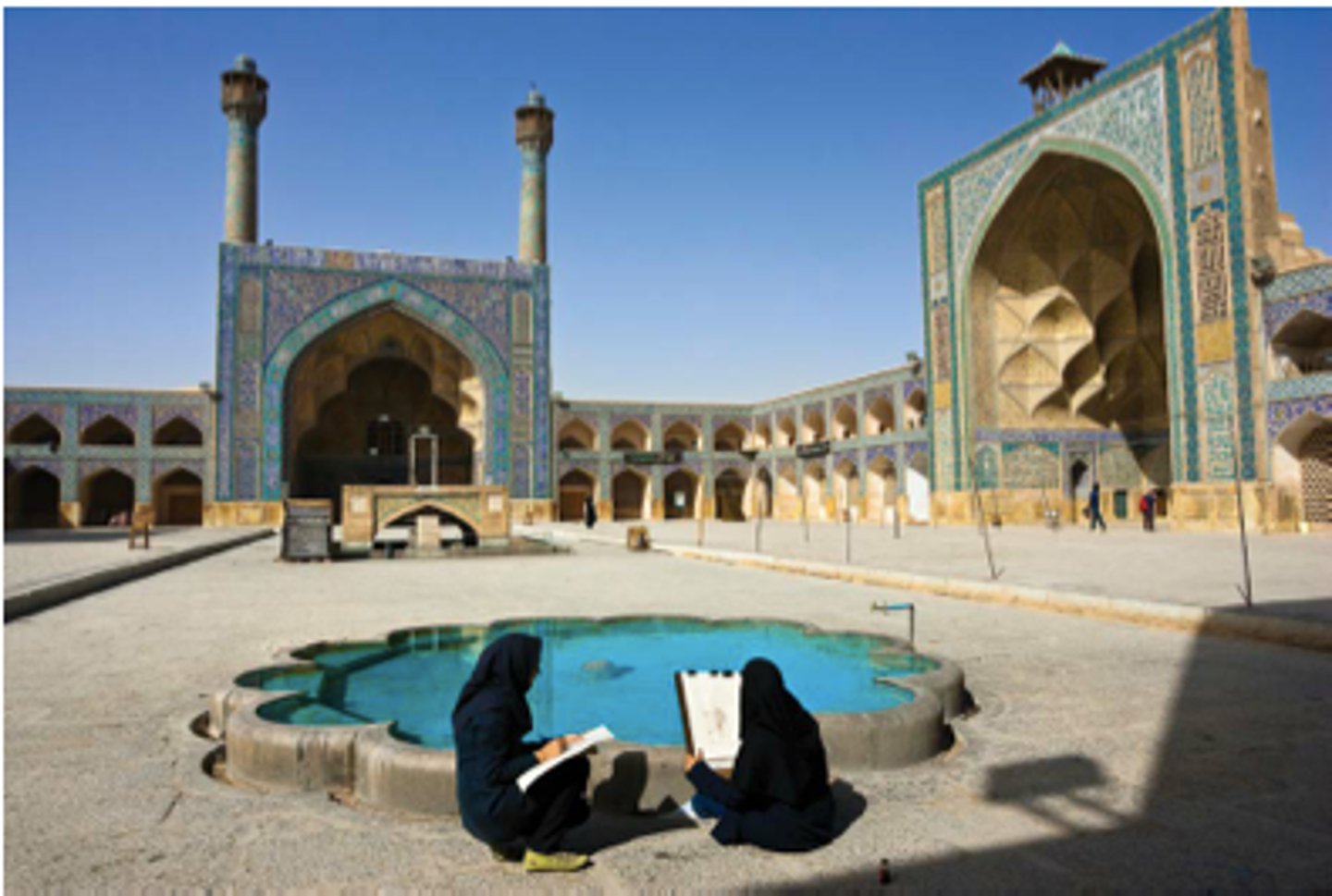
Folio from a Qur'an c. 8th-9th century CE
Arab, North Africa, or Near East Abbasid
ink, color, and gold on parchment
religious
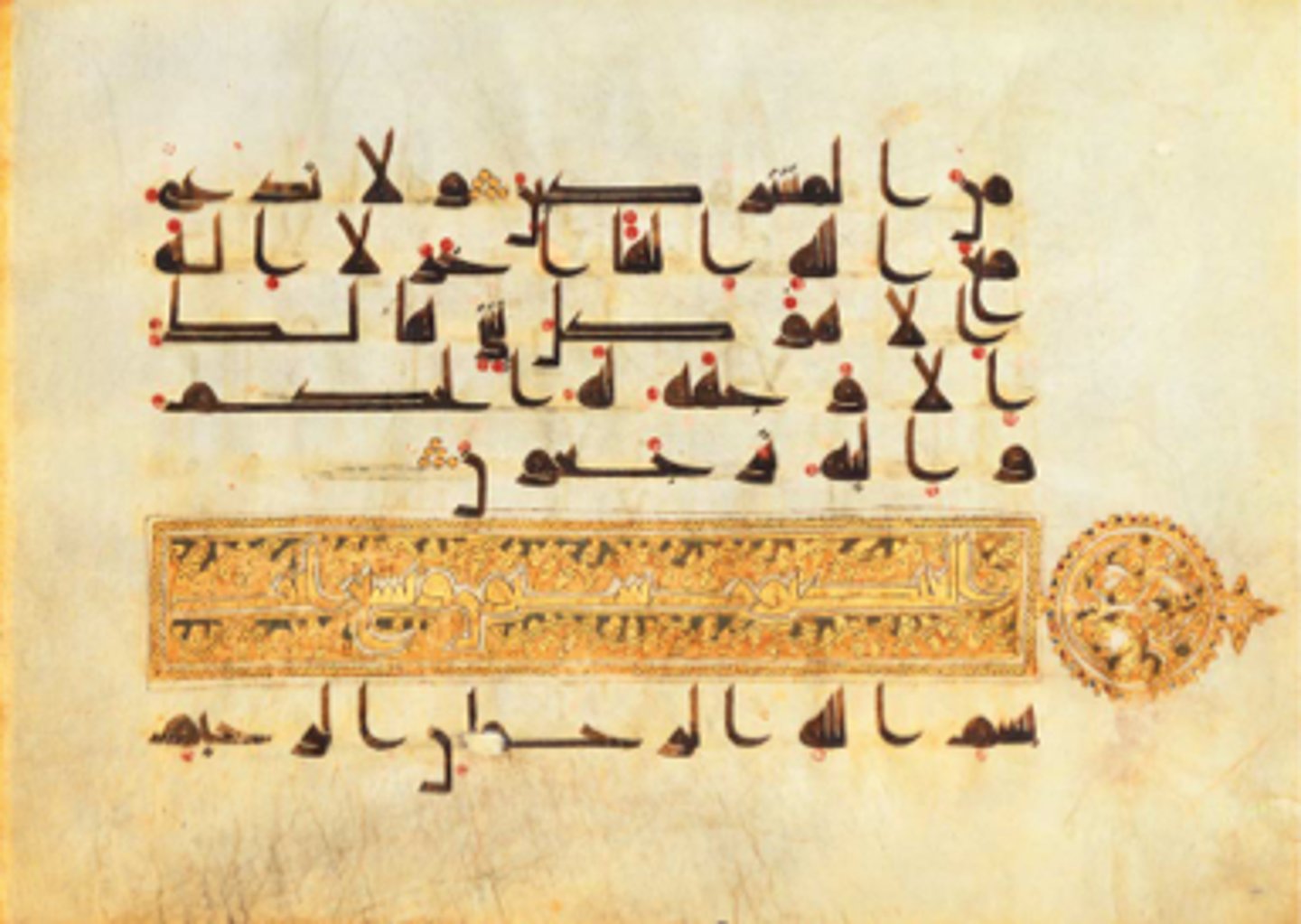
Bahram Gur Fight the Karg 1330-1340 CE
Great Il-Khanid Shahnama
Persia, Islamic
ink and water color, gold and silver on paper
to entertain/tell a story, political propaganda

The Court of Gayumars 1522-1525 CE
Persia
Shah Tahmasp's Shanama
ink, watercolor, gold on paper
to tell a story/political
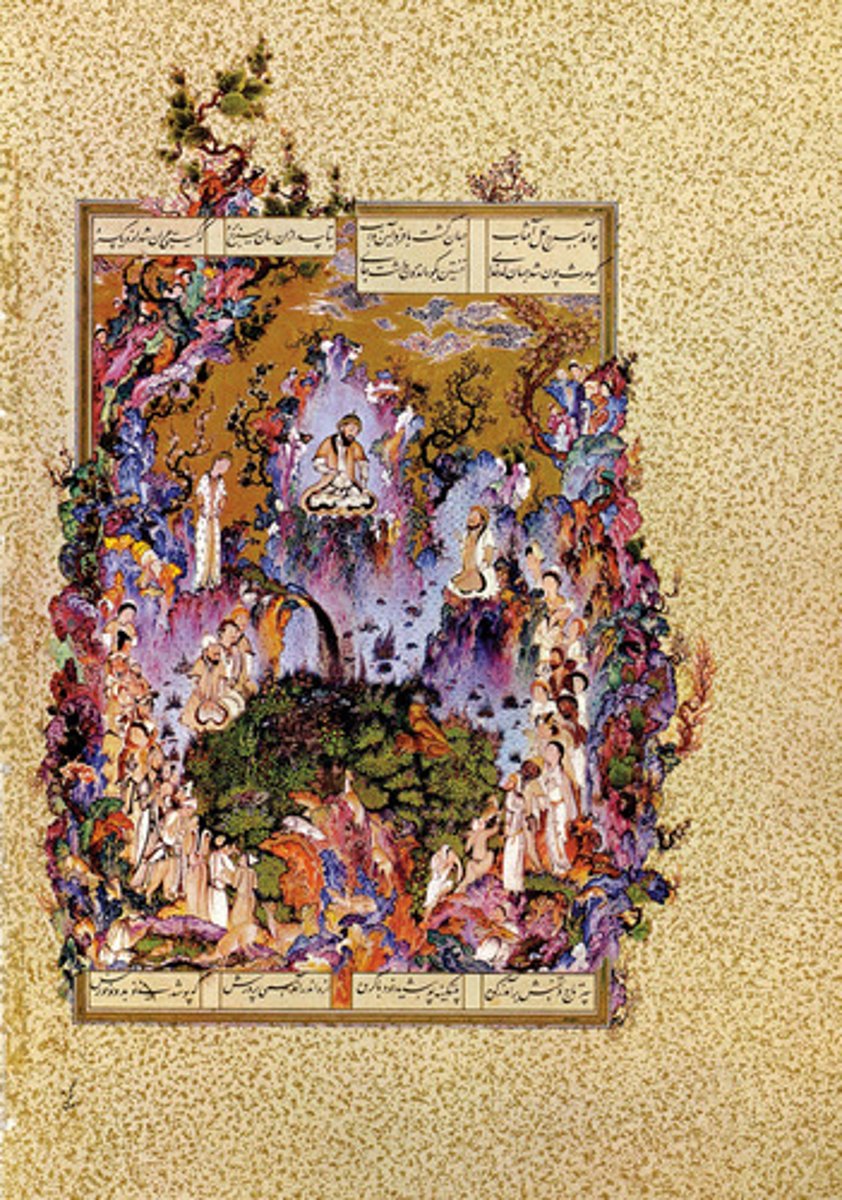
Basin (Baptistere de St. Louis) c. 1320-1340 CE
Egypt of Syria
Muhammad ibn al-Zain
brass inlaid w/ gold and silver
unclear (NOT RELIGIOUS)
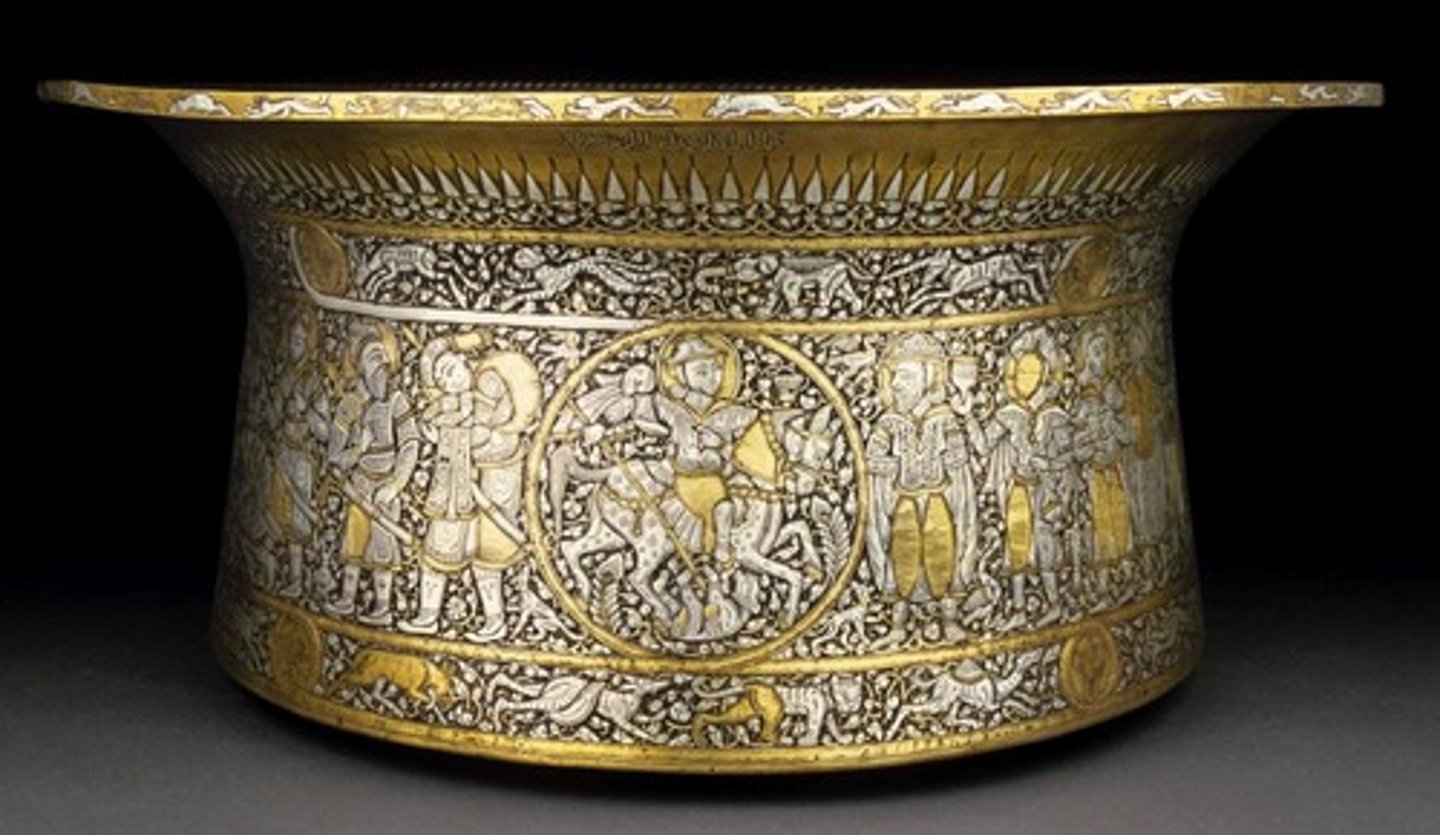
Ardabil carpet 1539-1540 CE
commissioned by Maqsud Kashani
silk warps and wefts with wool pile
created for a mosque honoring a Sufi Shaikh
set of two, located in LA and other in UK)
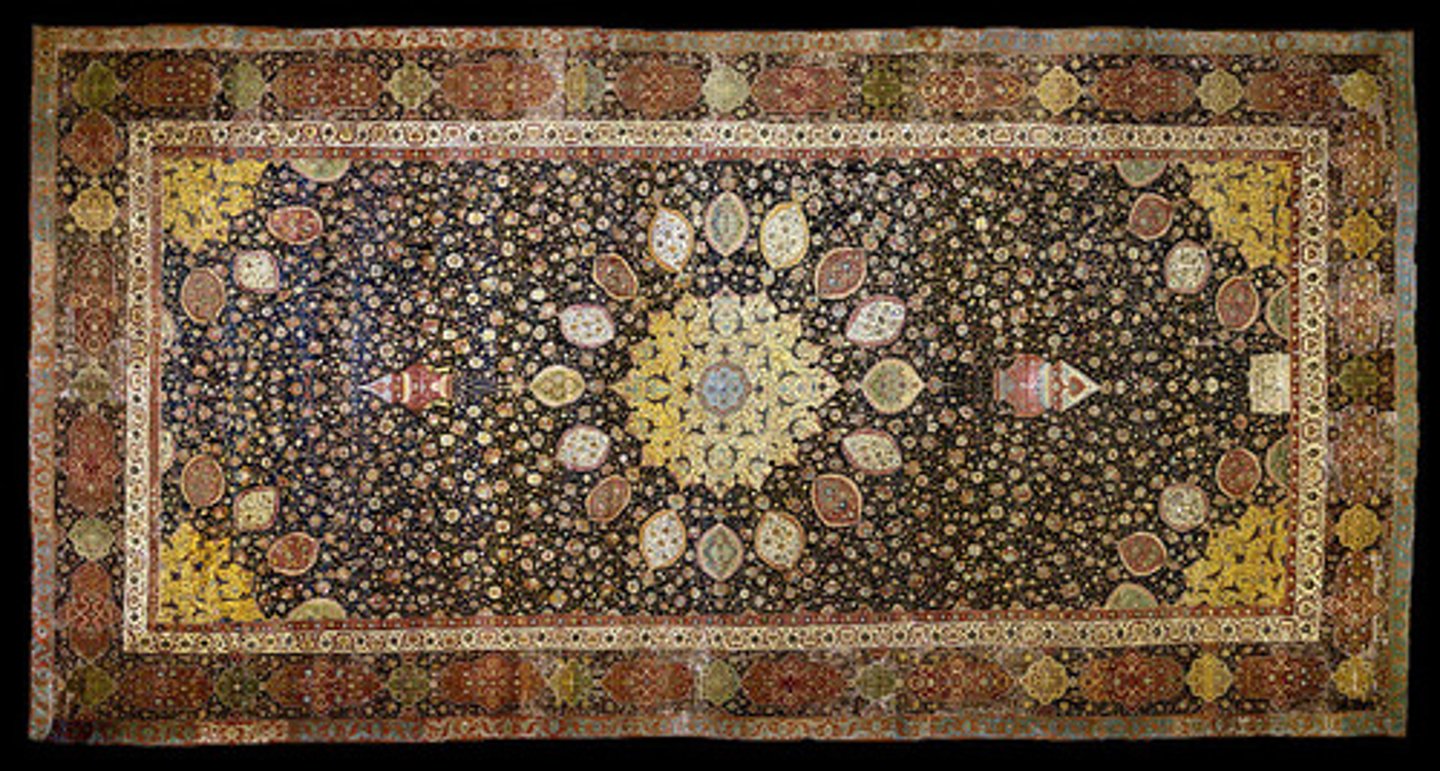
Islam
A religion based on the teachings of the prophet Mohammed which stresses belief in one god (Allah), Paradise and Hell, and a body of law written in the Quran. Followers are called Muslims.
Mosque
A Muslim place of worship
Muhammad
Arab prophet; founder of religion of Islam.
Qur'an
the sacred writings of Islam revealed by God to the prophet Muhammad during his life at Mecca and Medina
5 Pillars of Faith
Prayer, Charity, Fasting, Pilgrimage, and Faith.
Mihrab
(Islam) a niche in the wall of a mosque that indicates the direction of Mecca
Imam
a leader of prayer in a mosque
Qibla
This wall in a mosque always faces Mecca.
Minaret
A distinctive feature of mosque architecture, a tower from which the faithful are called to worship.
Arabesque
an ornamental design consisting of intertwined flowing lines, originally found in Arabic or Moorish decoration.
Calligraphy (Kufic)
earliest extant Islamic style of handwritten alphabet that was used by early Muslims to record the Qur'an
Tessellation
A repeating pattern of plane figures that completely cover a plane with no gaps or overlaps
Anionic
the absence of figurative representations, or icons, of deities or religious figures, often replaced by symbolic or abstract forms
Cave paintings in Lascaux (Hall of Bulls) c. 16000-14000 BCE
unknown
France
cave wall, charcoal, and mineral pigments
religious?

Apollo 11 Cave Tablet 25000-23500 BCE
unknown
Namibia
charcoal on stone (quartzite)
religious? decorative?
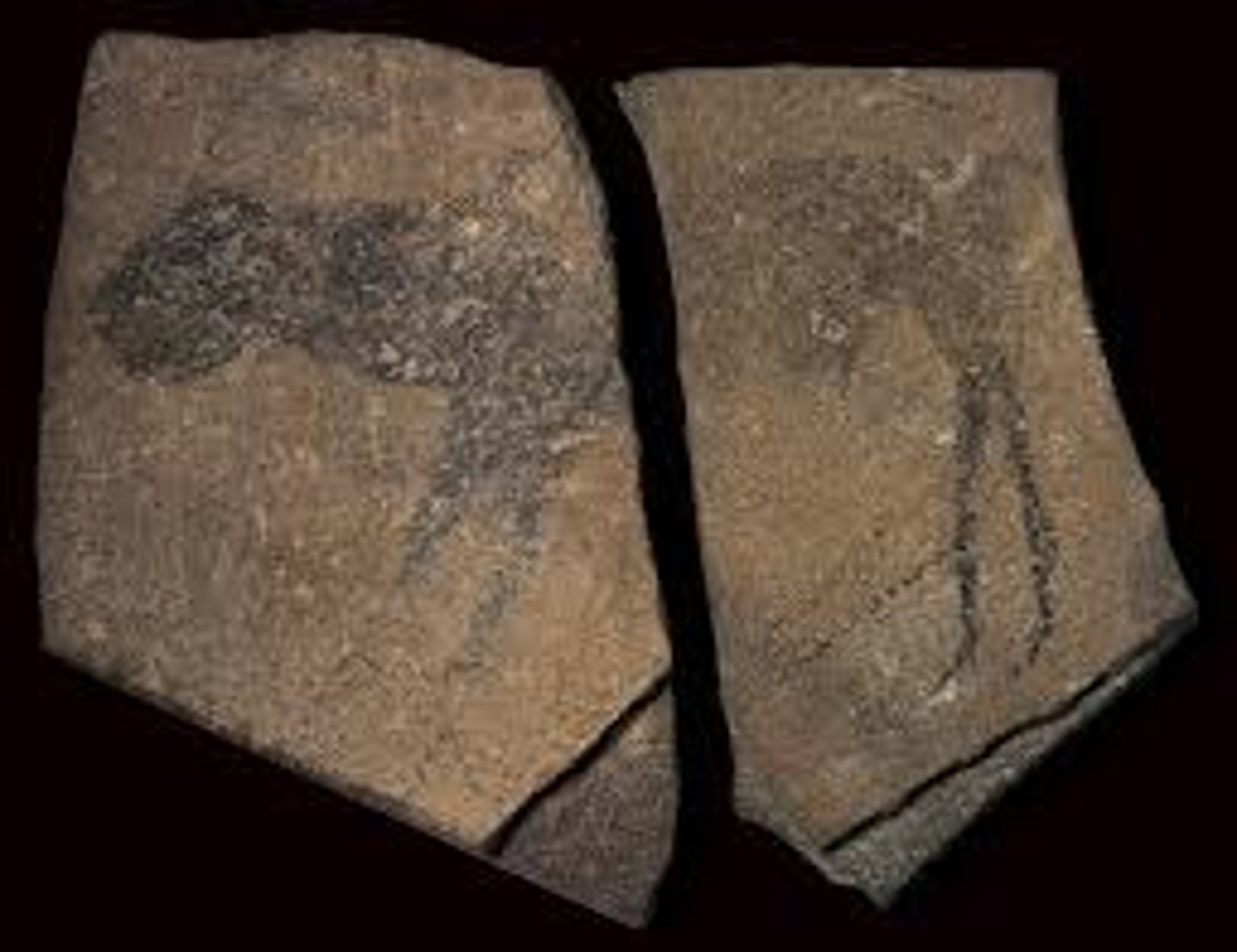
Running Horned Woman 6000-4000 BCE
unknown
Algeria, neolithic
pigment on rock
ceremonial? Religious?
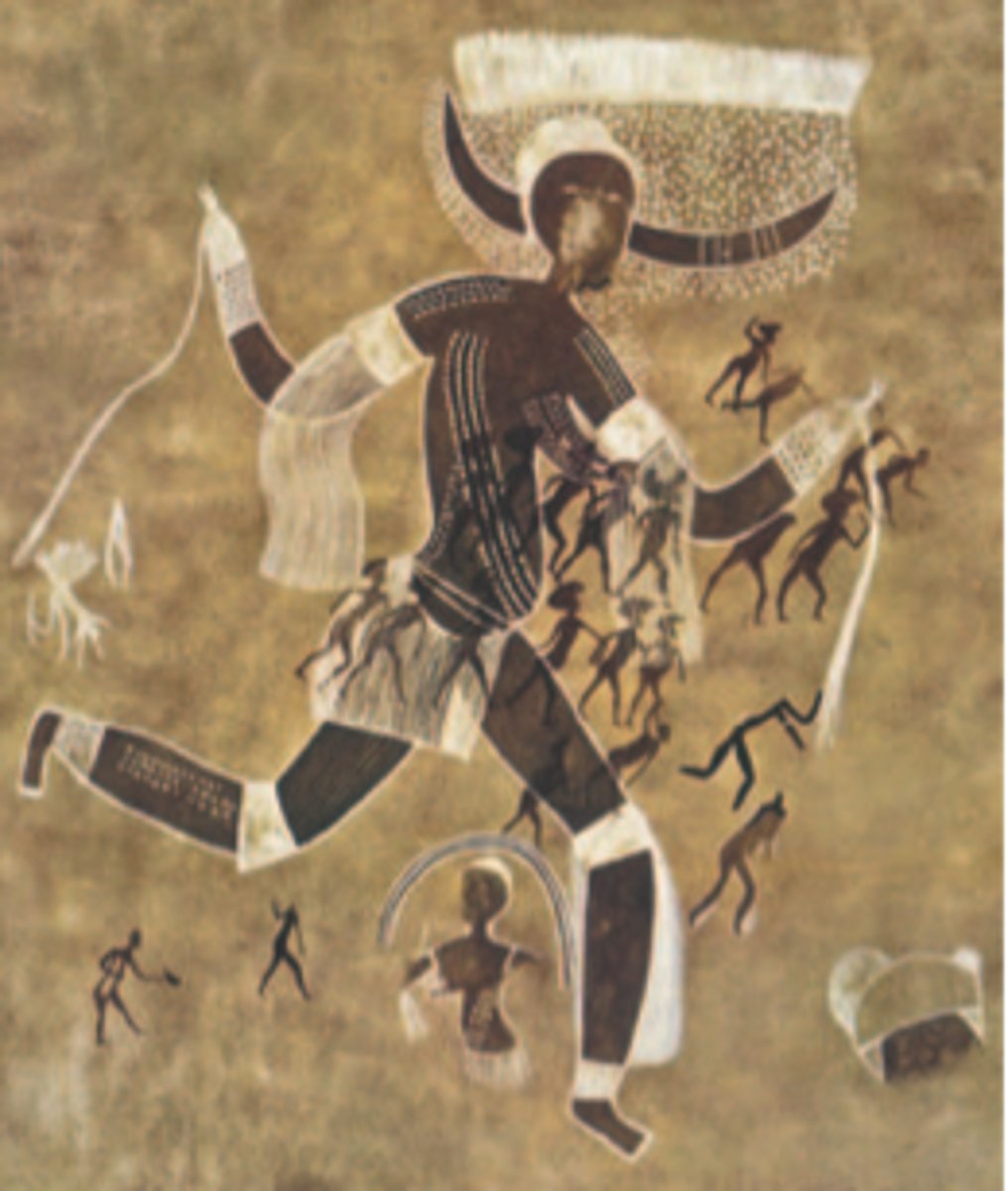
Camelid sacrum in the shape of a canine 14000- 7000 BCE
unknown
Mexico, paleolithic
bone
as a mask?
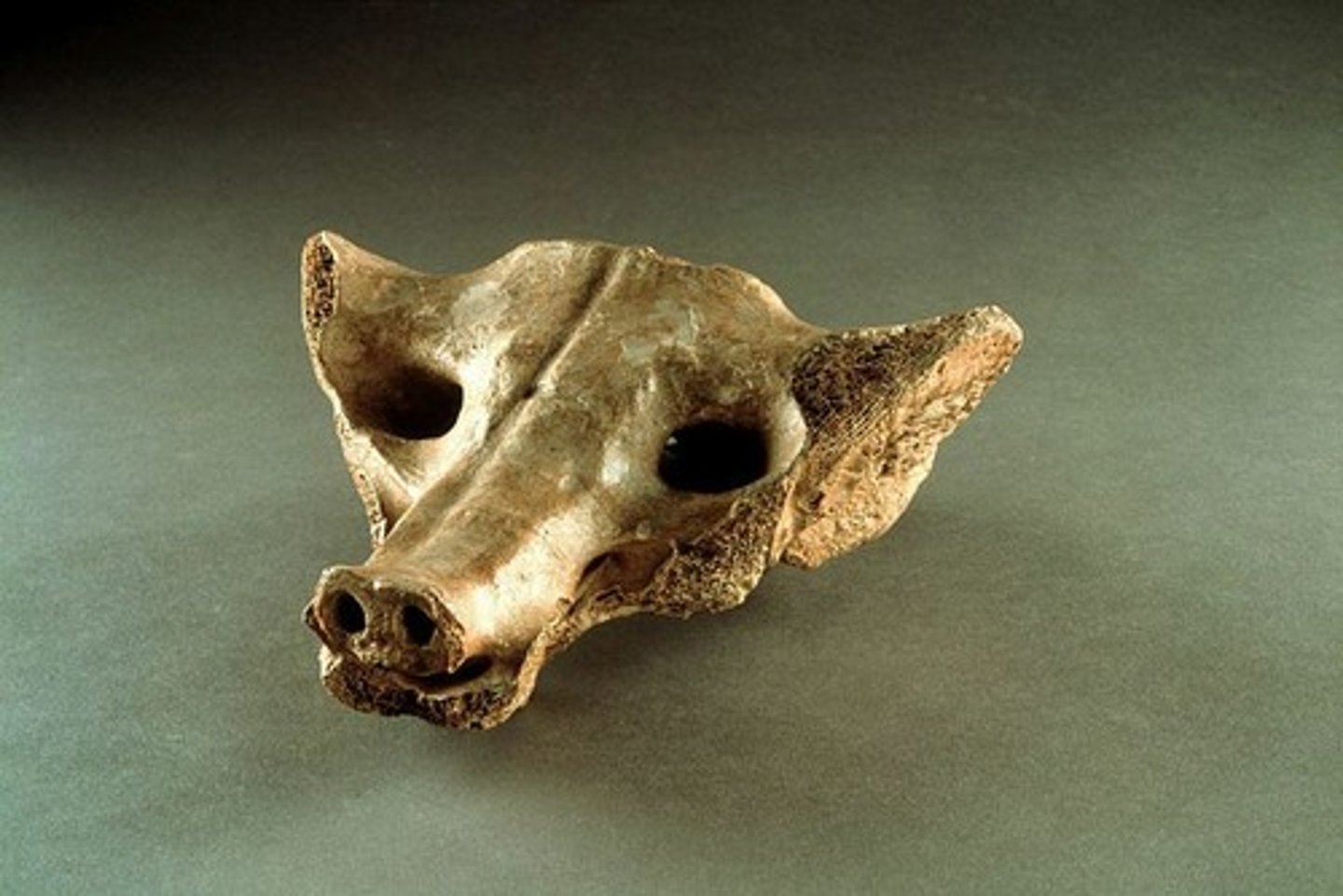
Beaker with Ibex motifs 4200 -3500 BCE
unknown
Iran
painted terra cotta
religious? funerary?
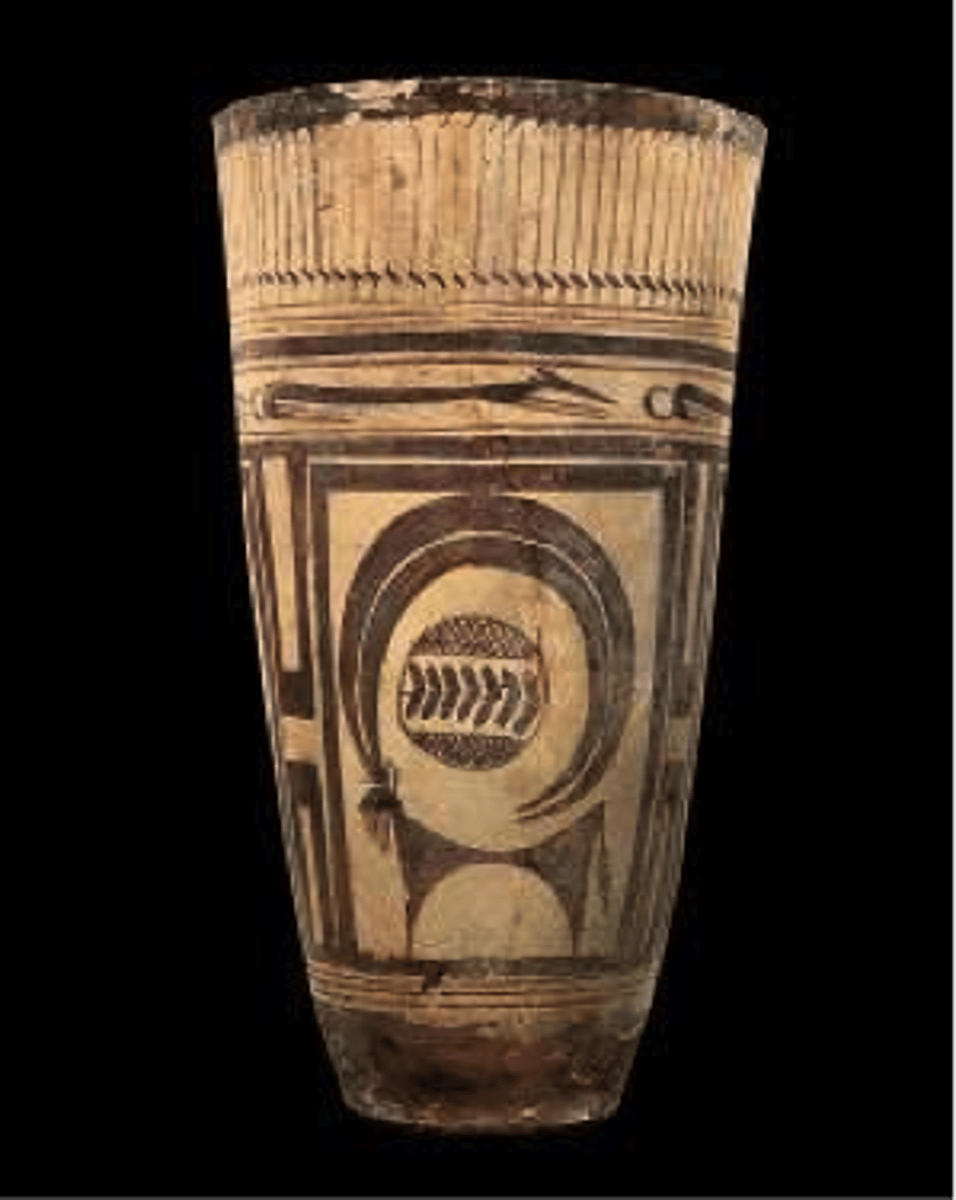
Jade cong 3300-2200 BCE
unknown
China, neolithic
jade
burial/funerary good
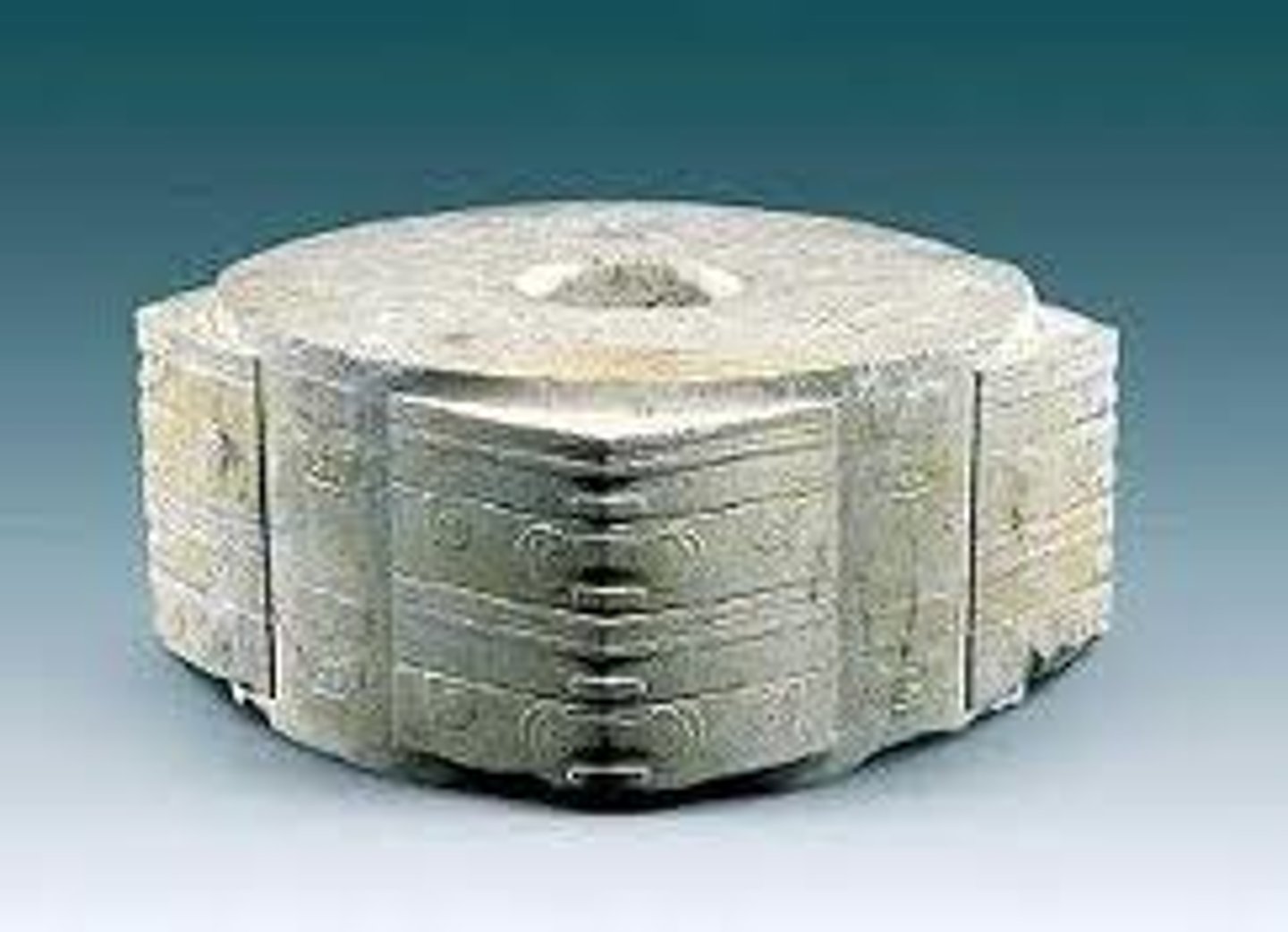
Anamorphic Stele 3000 BCE
unknown
Saudi Arabia, neolithic
sandstone
grave marker

Tlatilco Female Figure 1200-900 BCE
unknown
Mexico
terracotta
burial good?
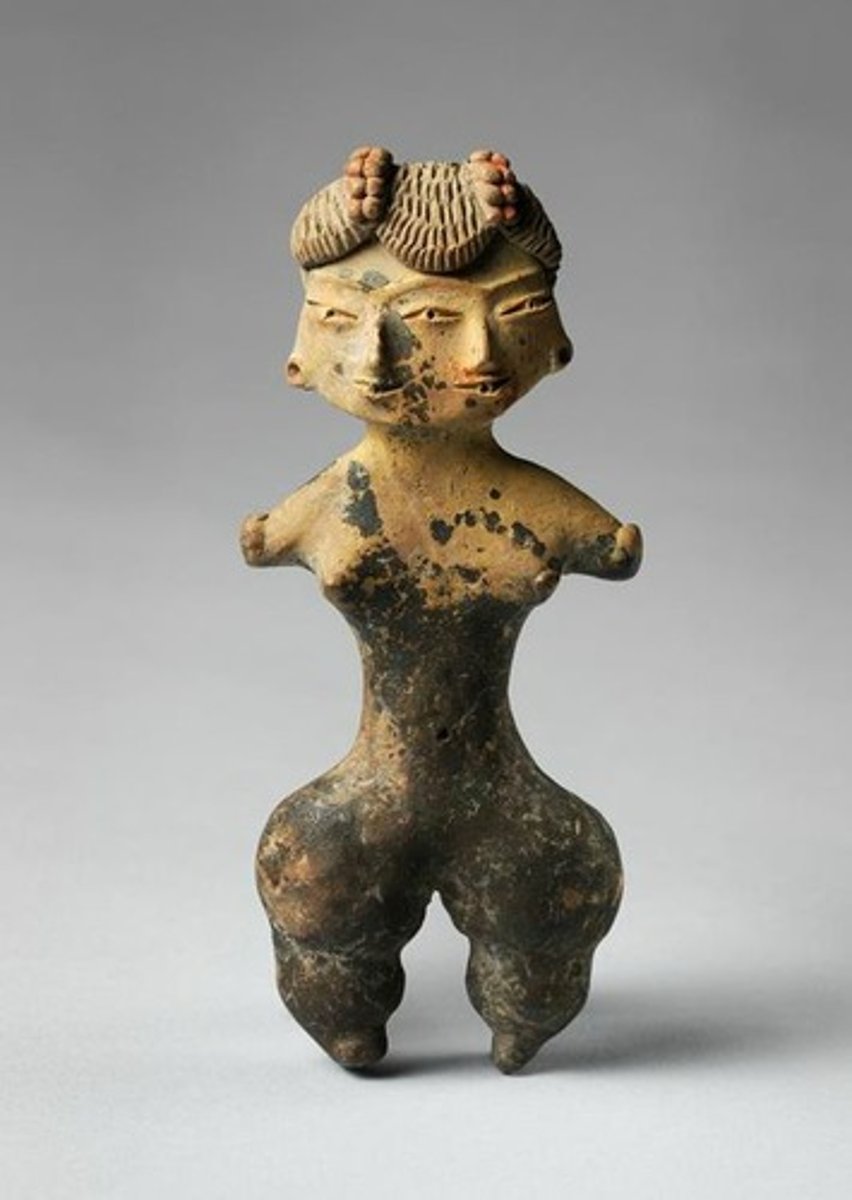
The Ambum Stone c. 1500 BCE
unknown
Papua New Guinea
grey whacke
ritualistic? pestle?
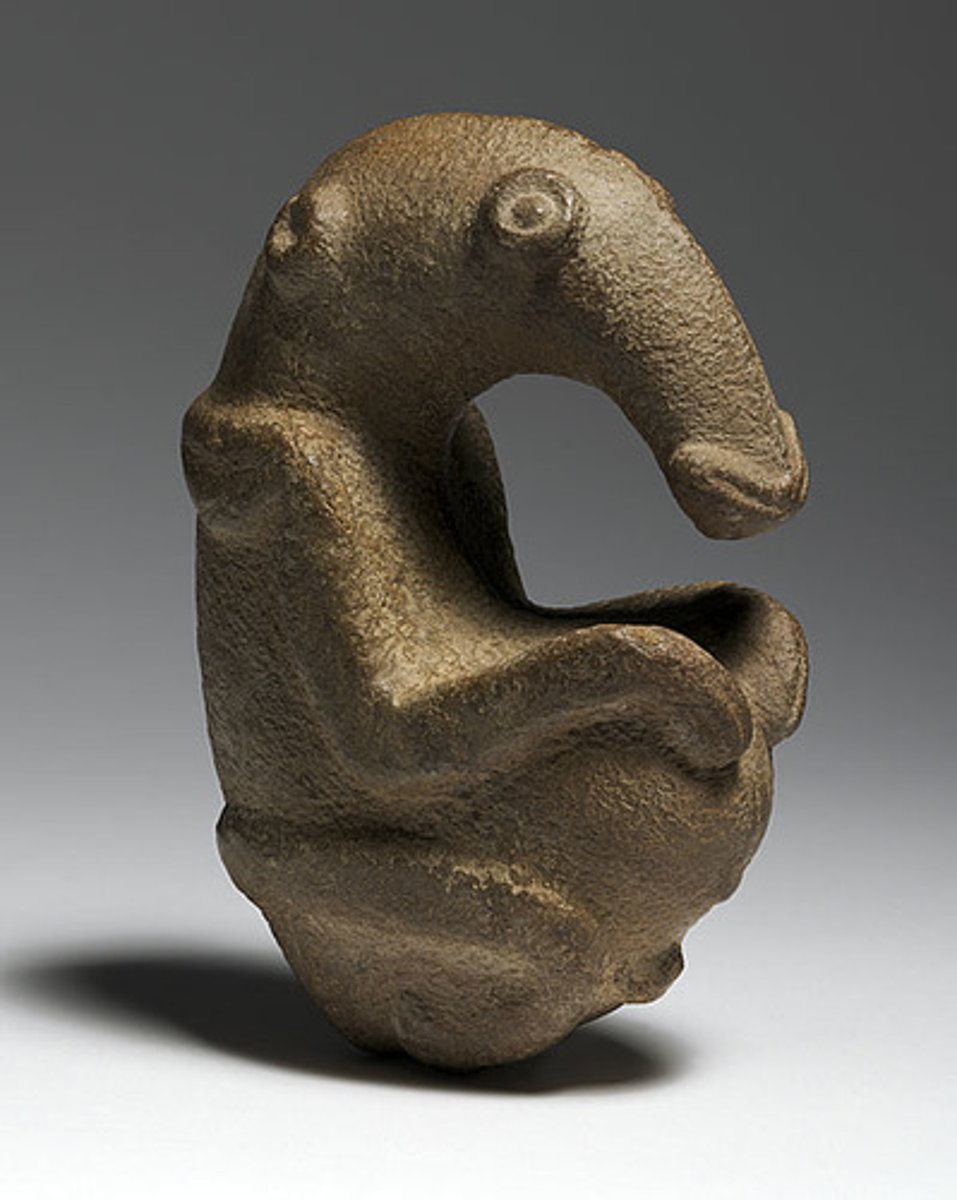
Skara Brae c. 3180-2500 BCE
unknown
Scotland
rock, stone
to house people

New Grange c. 3200 BCE
unknown
Ireland, neolithic
stone
as a grave
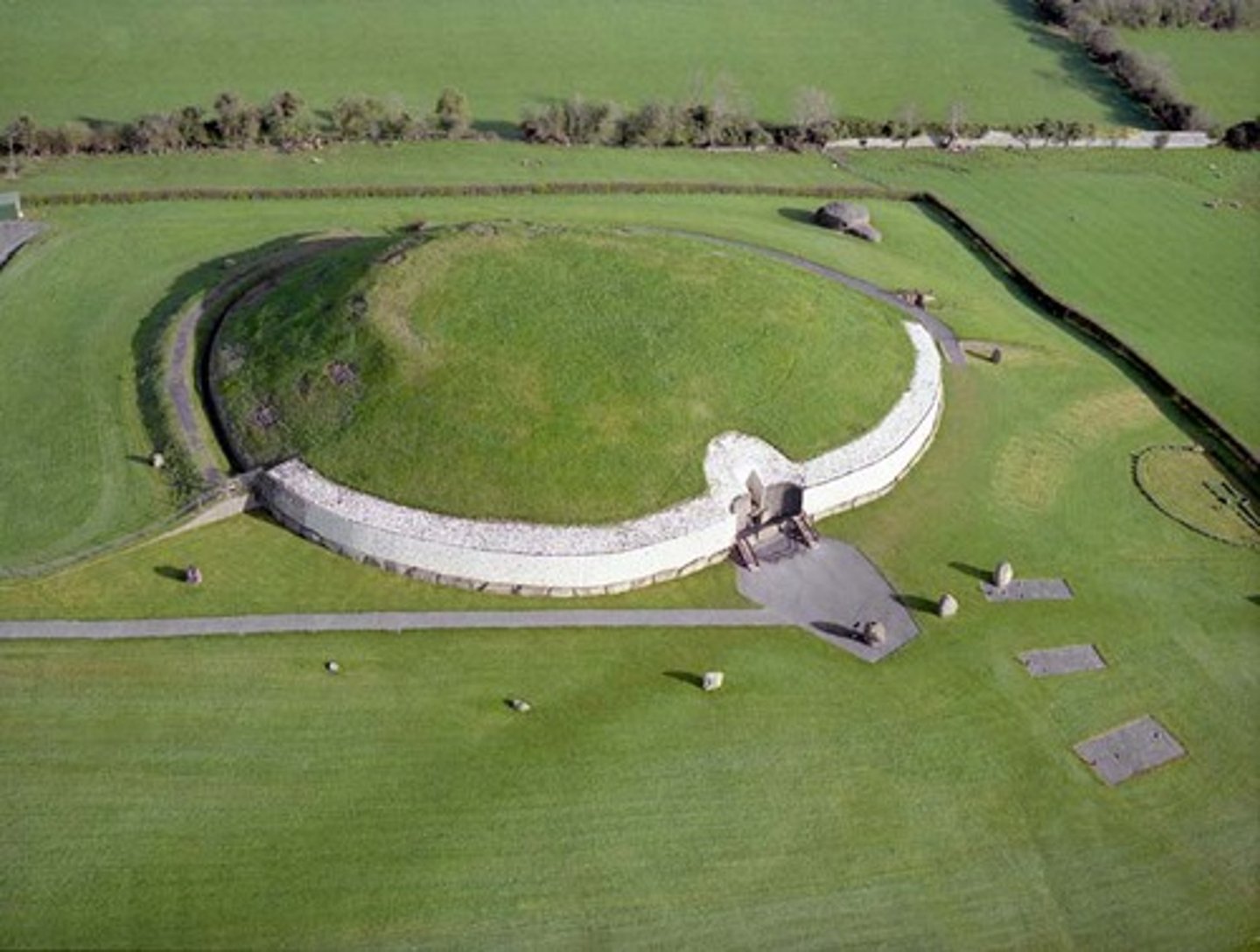
Stone henge 2500-1600 BCE
unknown
England
sarsen stone and blue stone
cemetery, ritualistic?

Terracotta fragments c. 1000 BCE
Lapita peoples
Santa Cruz Islands
red-slip earthenware
for travel and trade
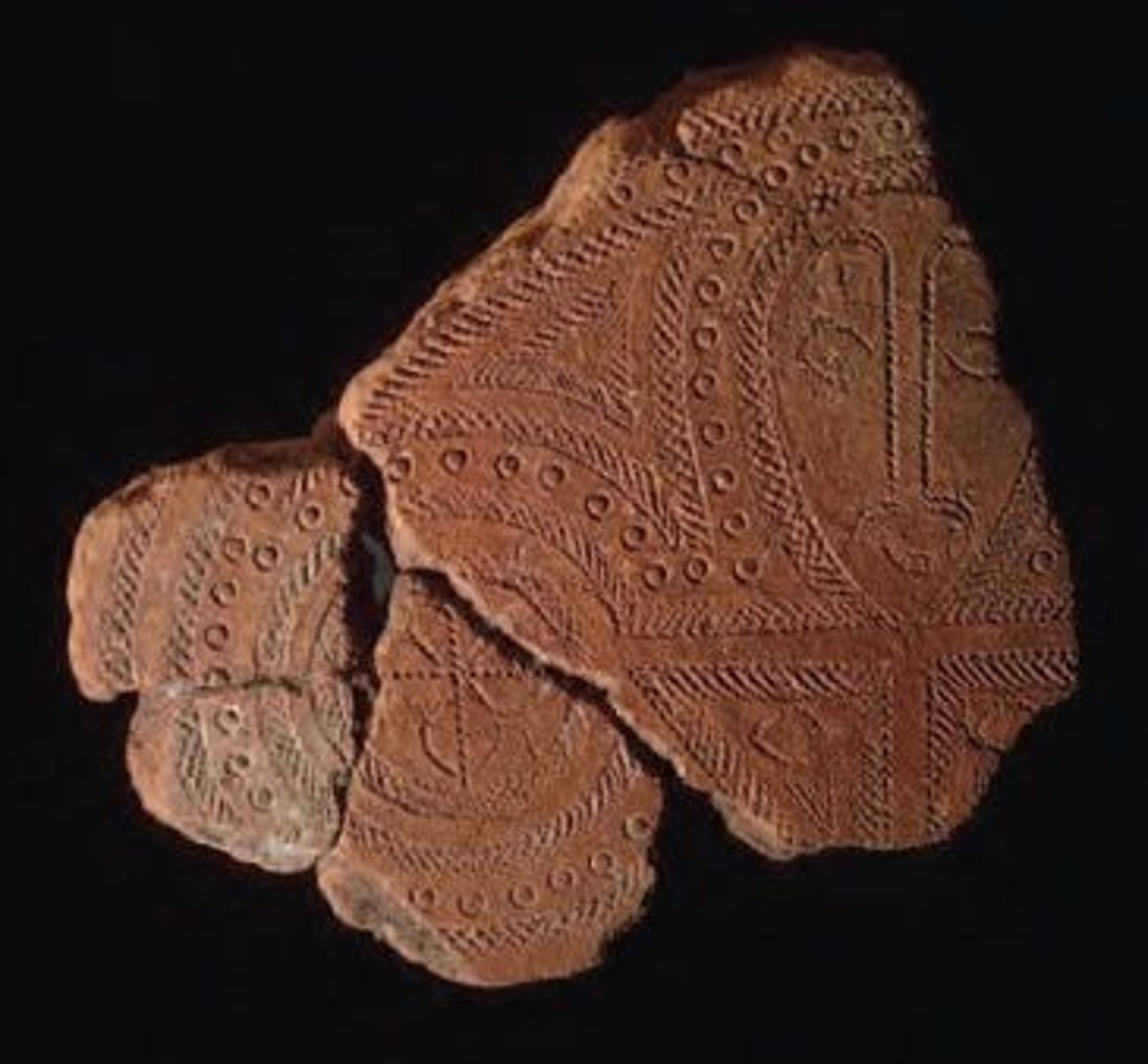
Guggenheim Museum Bilbao (finished 1997 CE)
Frank Gehry
Spain, Deconstructivism
Titanium, glass, limestone, steel
museum

MAXXI National Museum of XXI Century Arts 2009 CE
Zaha Hadid
Italy, deconstructivism-avant garde
concrete
secular, sense of community and museum
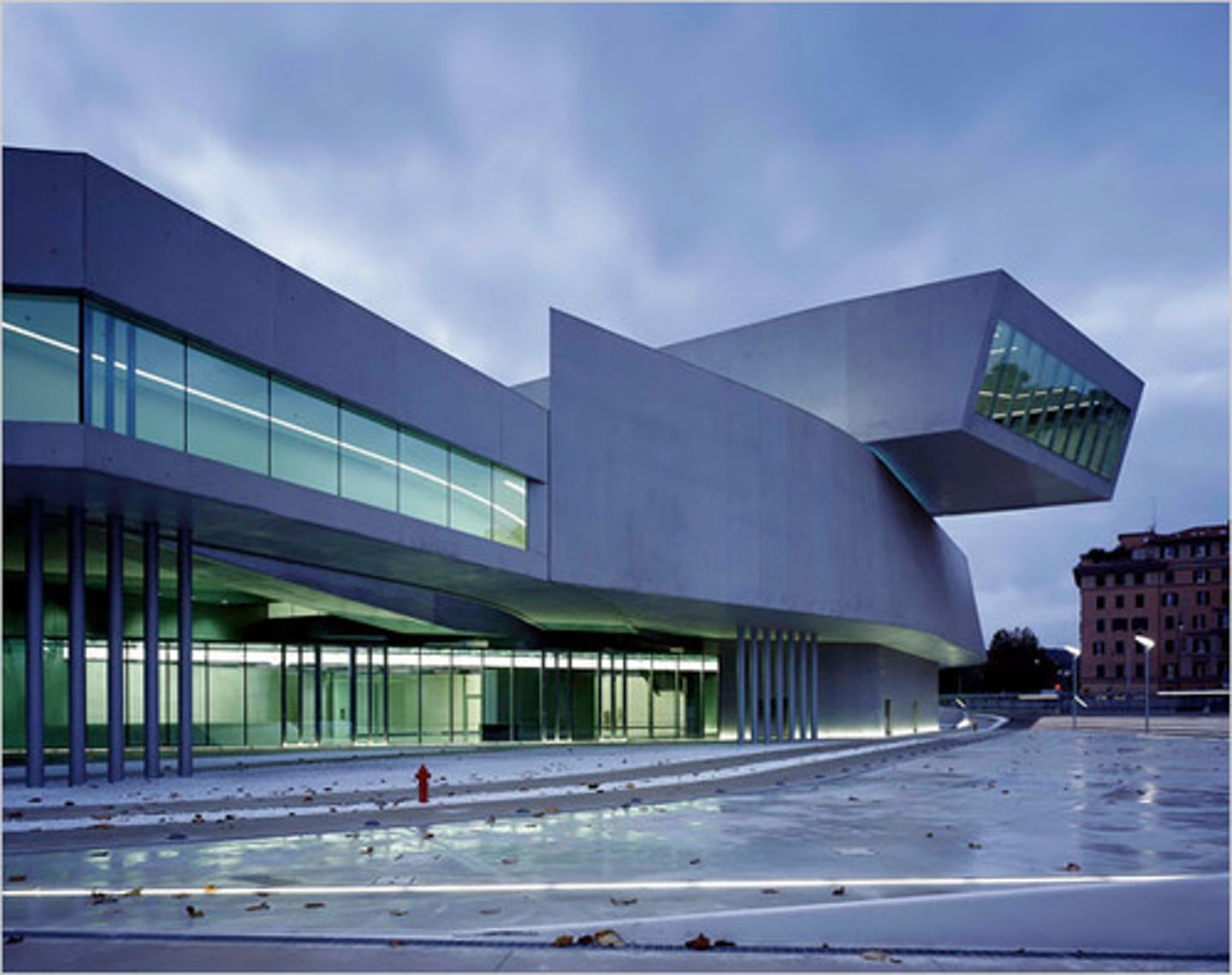
Dancing at the Louvre, from the series 'The French Collectoin", Part 1; #1 1991 CE
Faith Ringgold
USA
Acrylic on canvas, tie-dyed, fabric pieced border
tells a story/aspirational/inspirational

The Swing, After Fragonard 2001 CE
Yinka Shonibare
UK
installation (mannequin cotton print dress, rope swing, oak branch, artificial foliage)
to be art
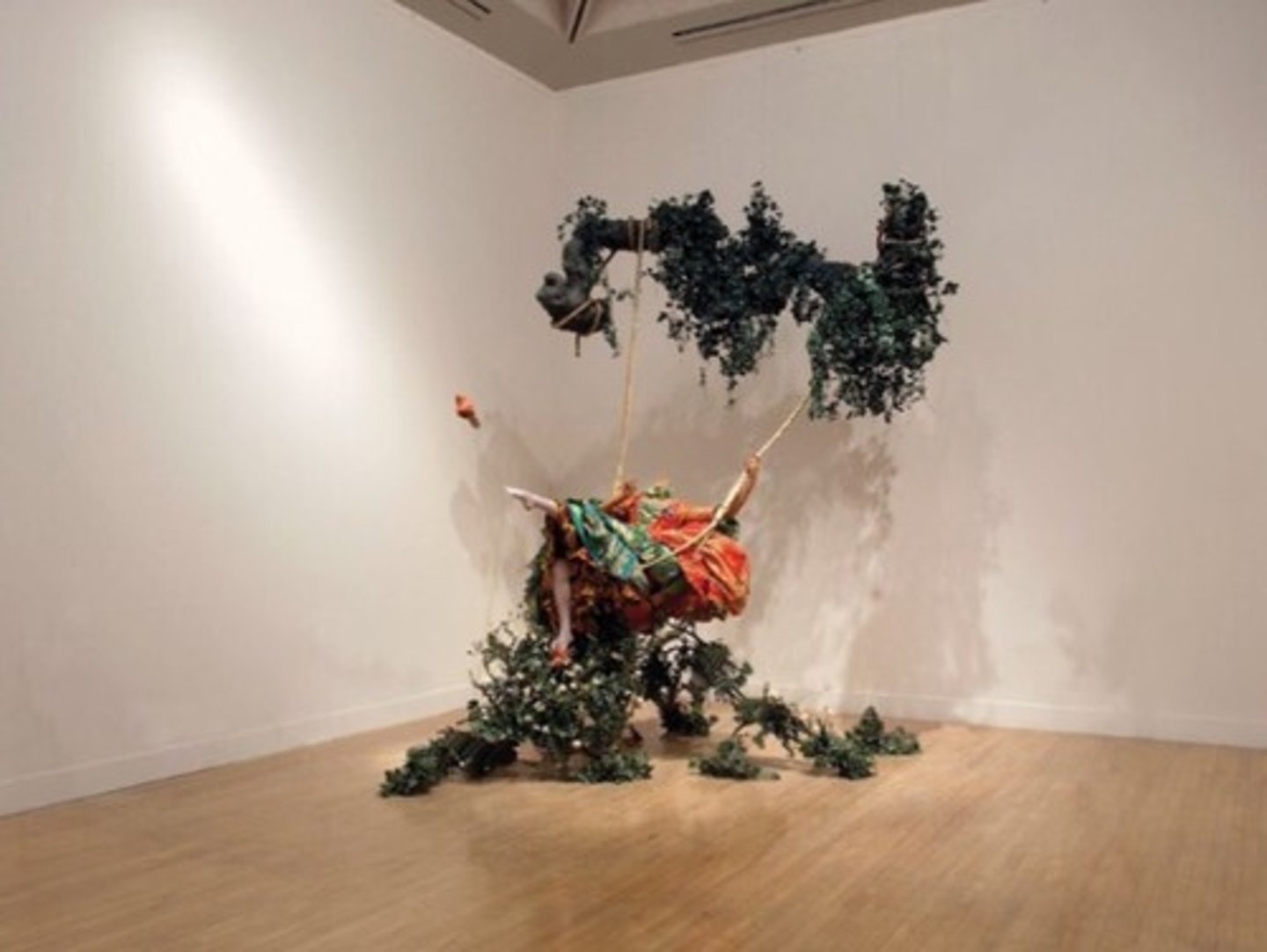
Horn Players 1983 CE
Jean-Michel Basquiat
USA
acrylic mounted on panel
to be art
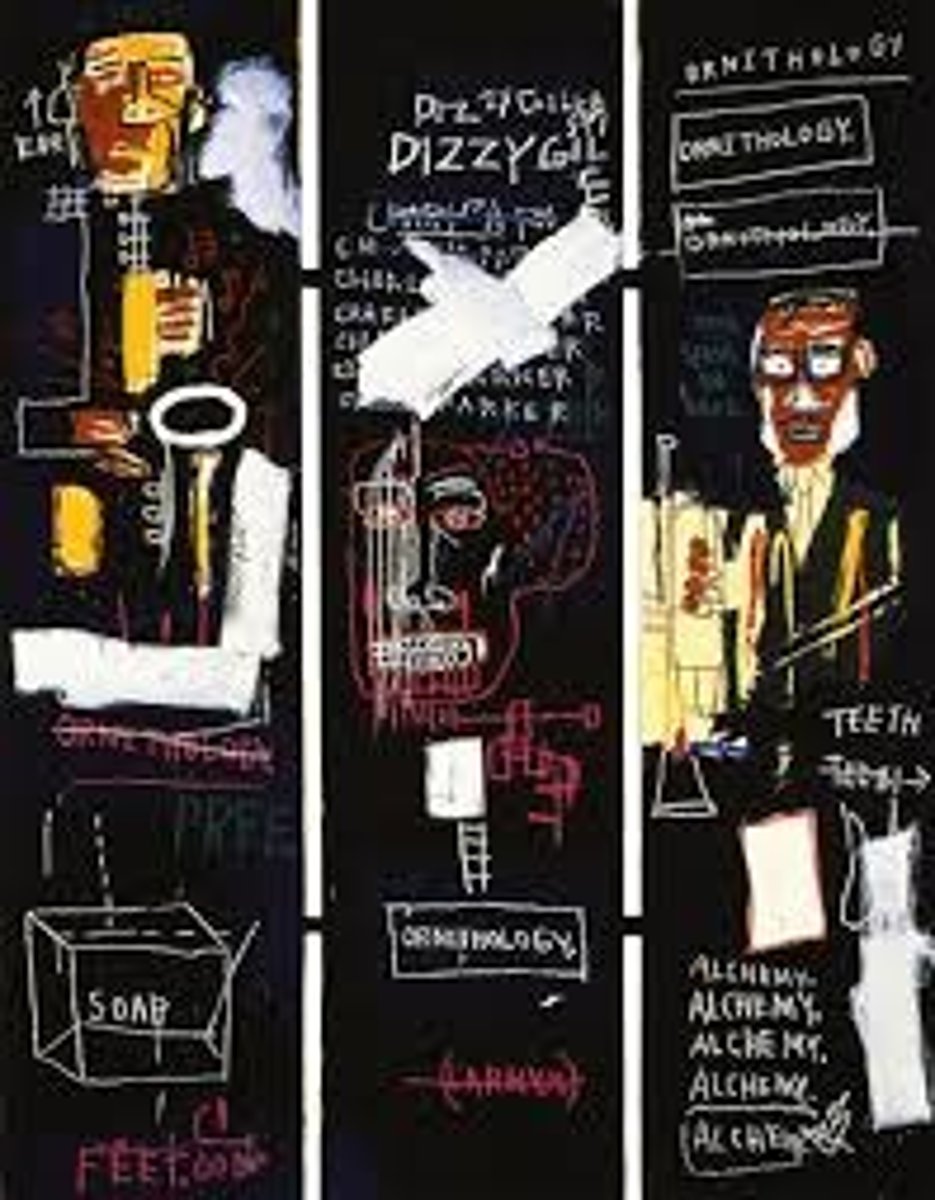
Darkytown Rebellion 2001 CE
Kara Walker
France
installation (paper and projection on wall)
political, racial
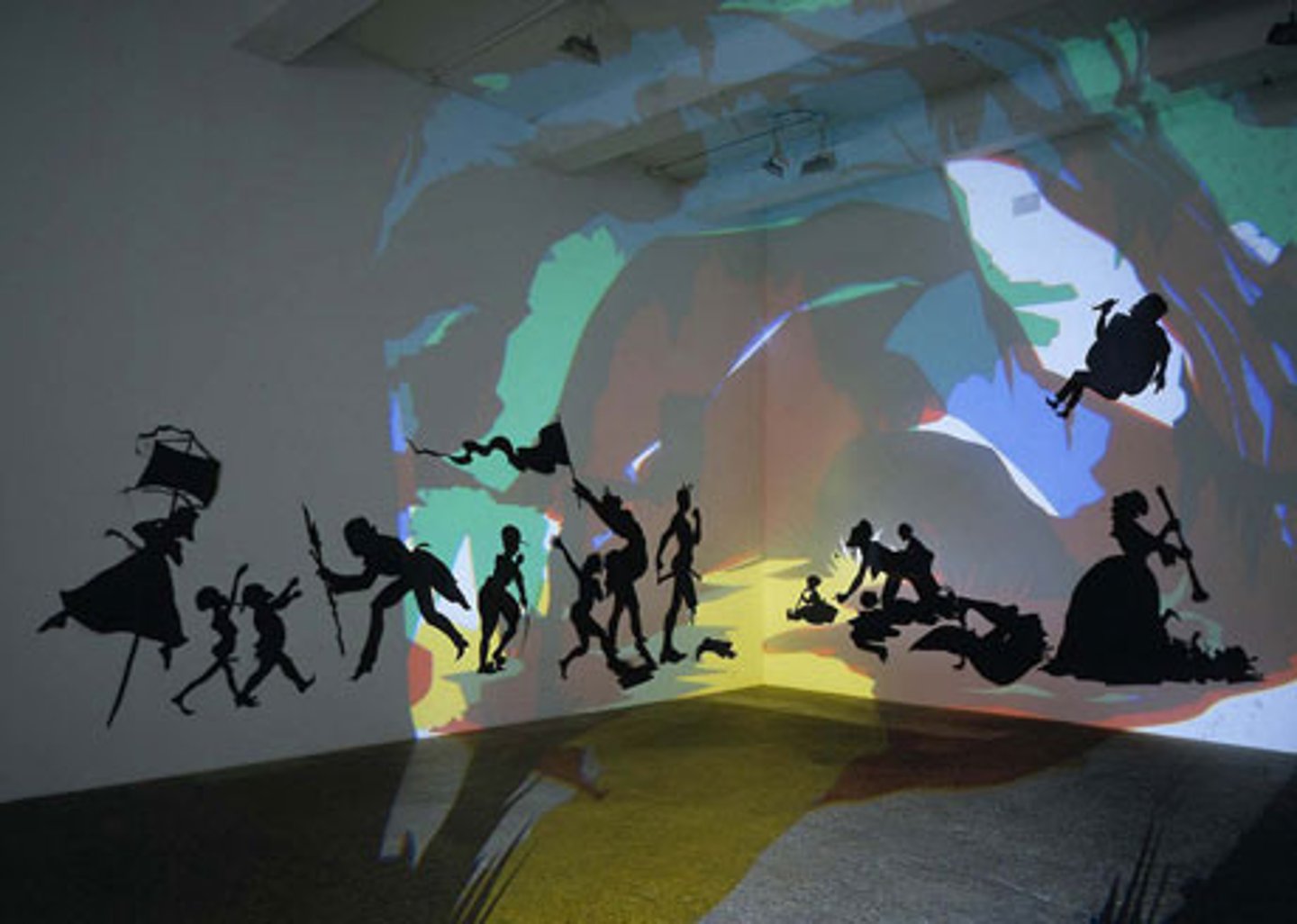
Summer Trees 1979 CE
Song Su-nam
South Korea, abstract
ink on paper
to be art
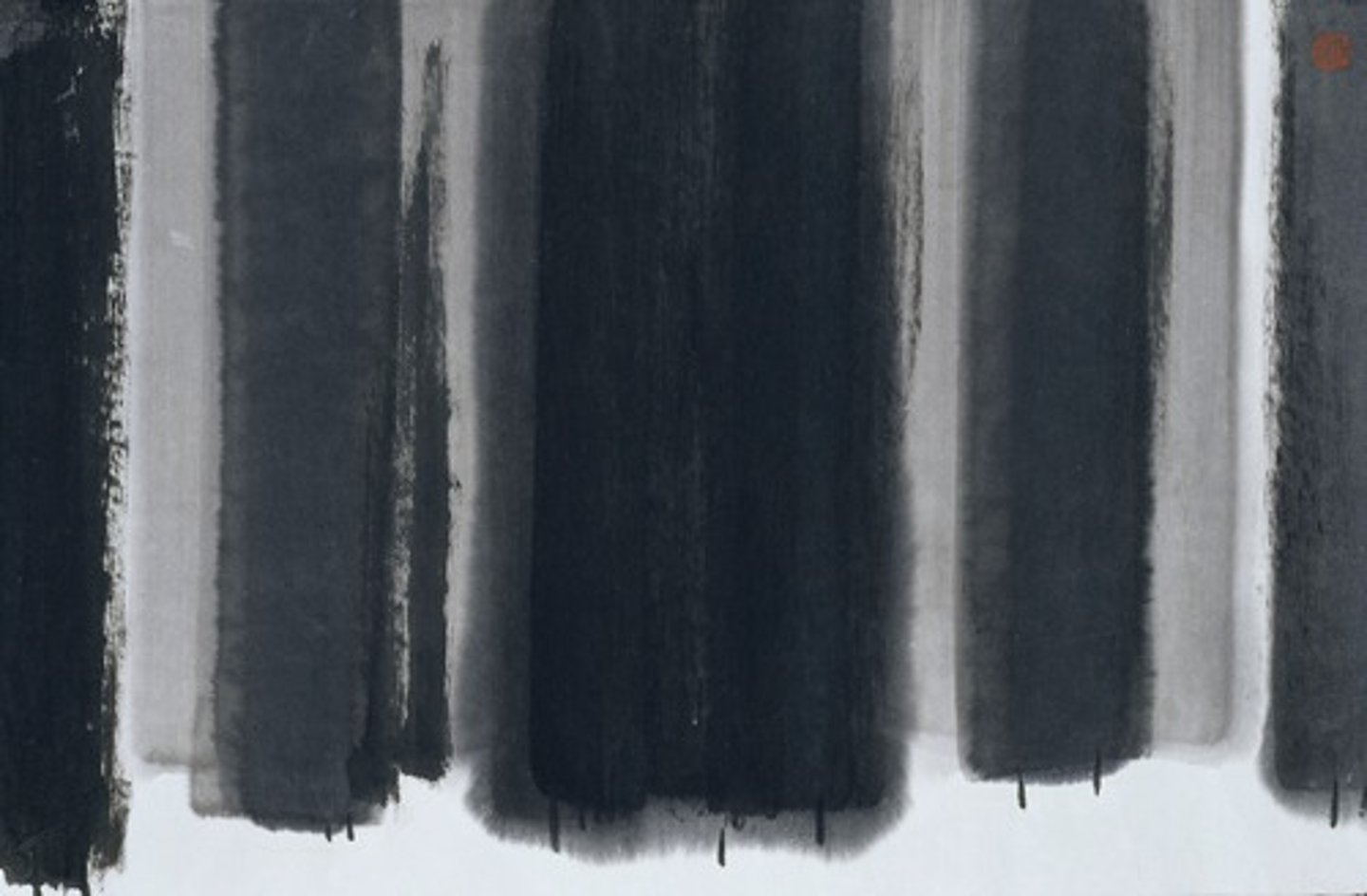
Trade (Gifts for Trading Land with White People) 1992 CE
Jaune Quick-to-See Smith
USA
oil and mixed media
political undertones/activism/cultural awareness
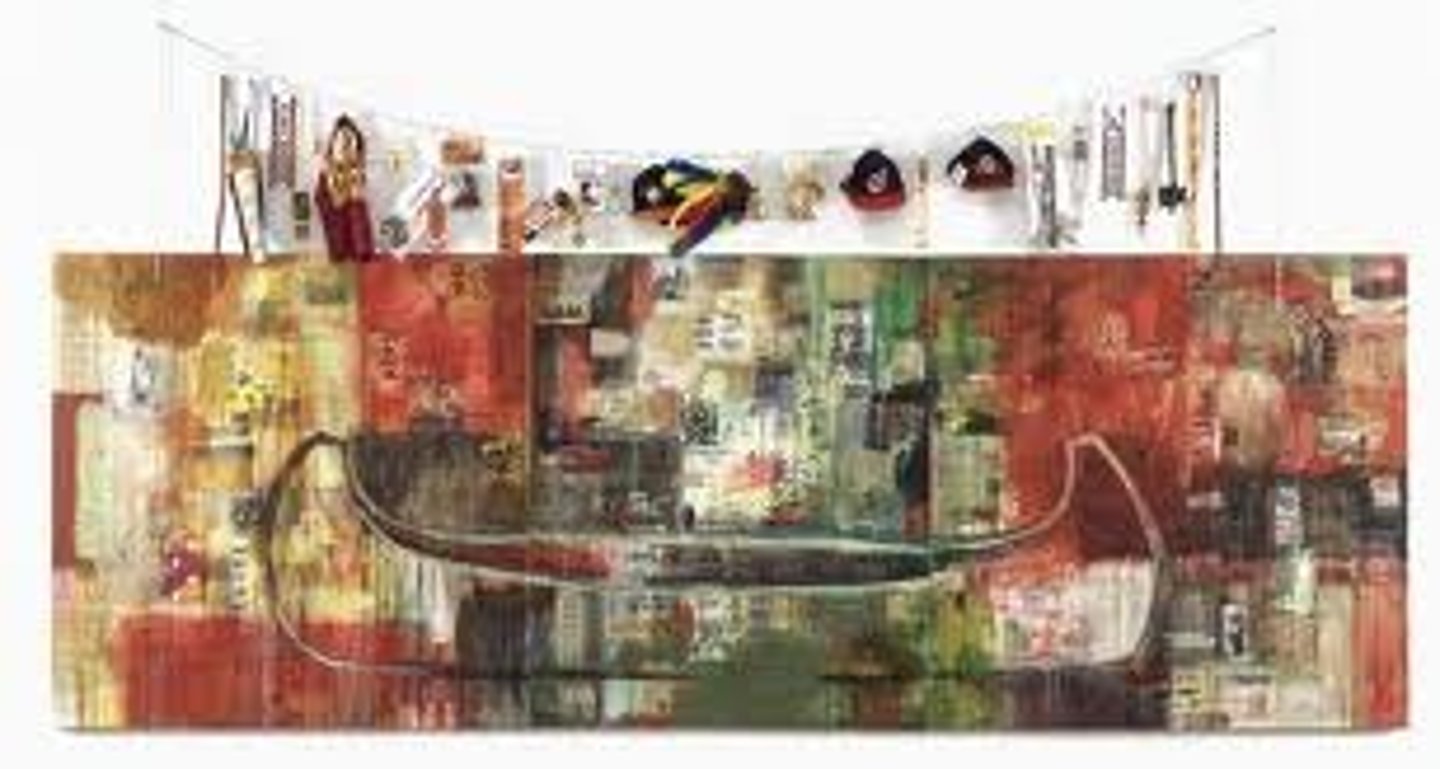
Vietnam Memorial 1982 CE
Maya Lin
USA
Black Granite
memorial
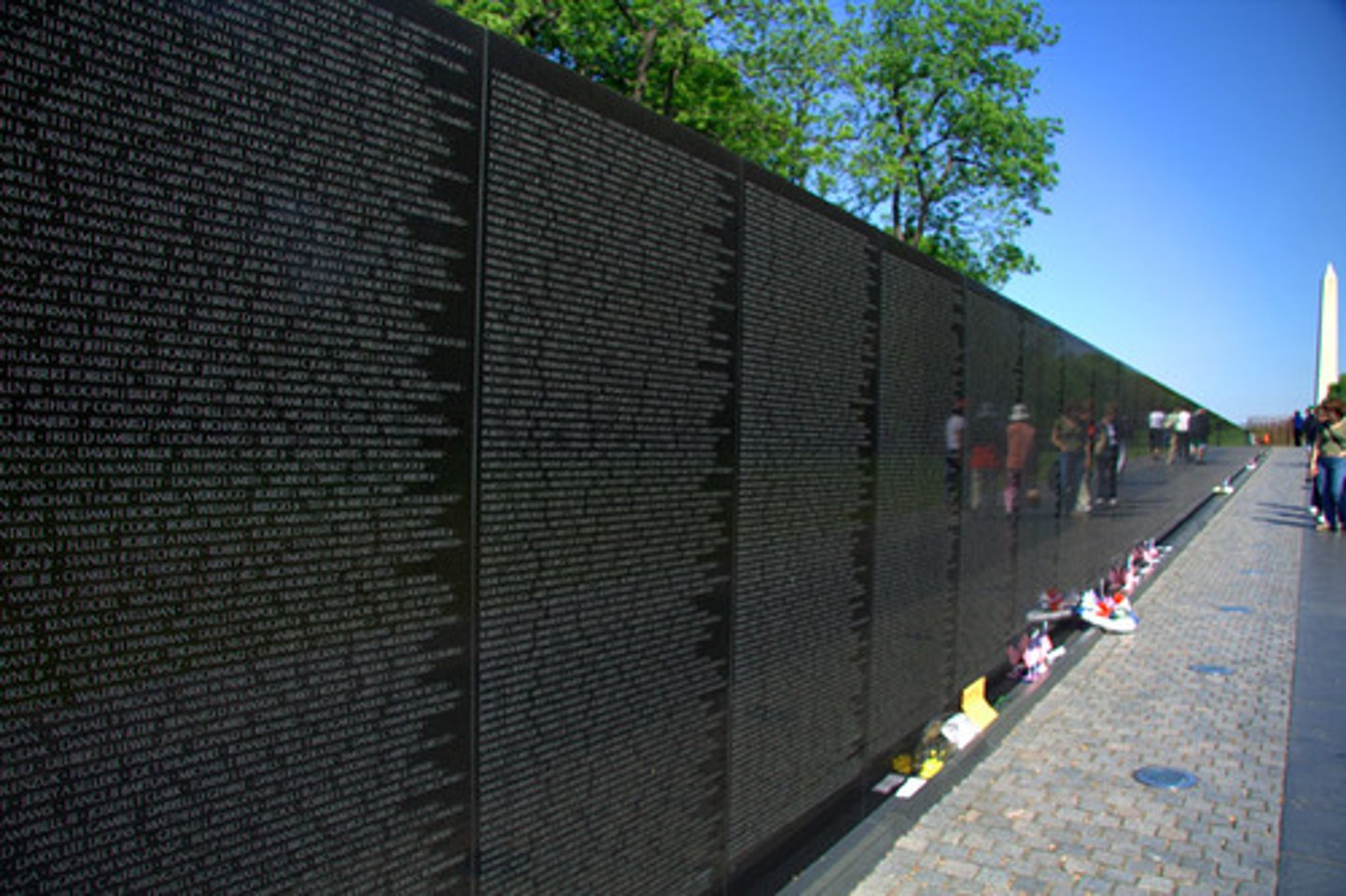
A Book from the Sky 1987-1991 CE
Xu Bing
China
ink on paper
possibly political
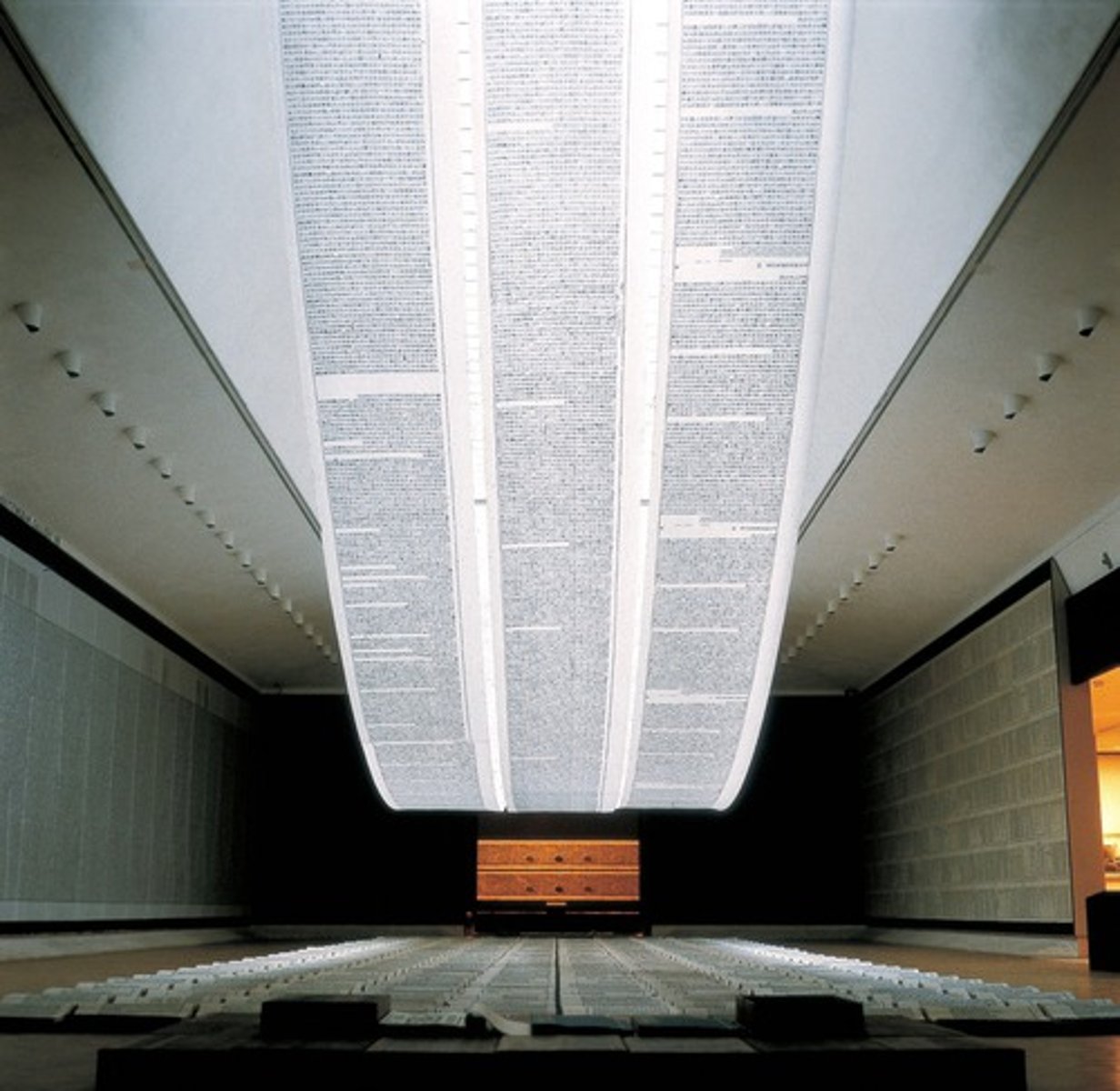
No Crying allowed in the Barbershop 1994 CE
Pepon Osorio
Puerto Rico
installation (mixed media w/ barber chairs, photographs, objects, video)
childhood memories

The Gates 2005 CE
Christo and Jean Claude
USA
installation
to show relationships between ppl and world

Shibboleth 2007-08 CE
Doris Salcerdo
UK
installation
socio-political commentary/activism as art
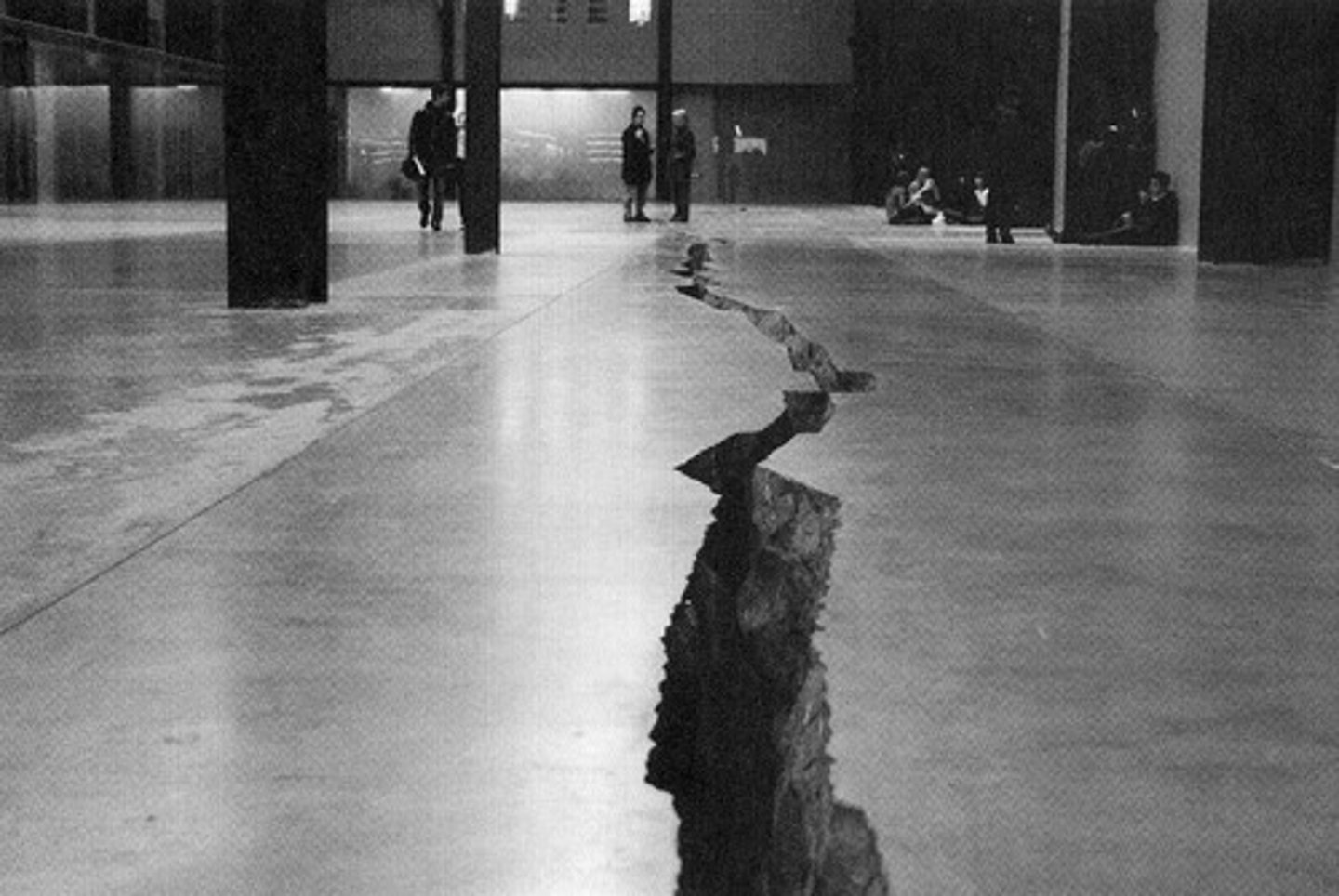
Sunflower Seeds 2010 CE
Ai Weiwei
UK
porcelain
art as activism

Rebellious Silence, from the Women of Allah Series 1994 CE
Shirin Neshat
Middle East
photograph
socio-political commentary
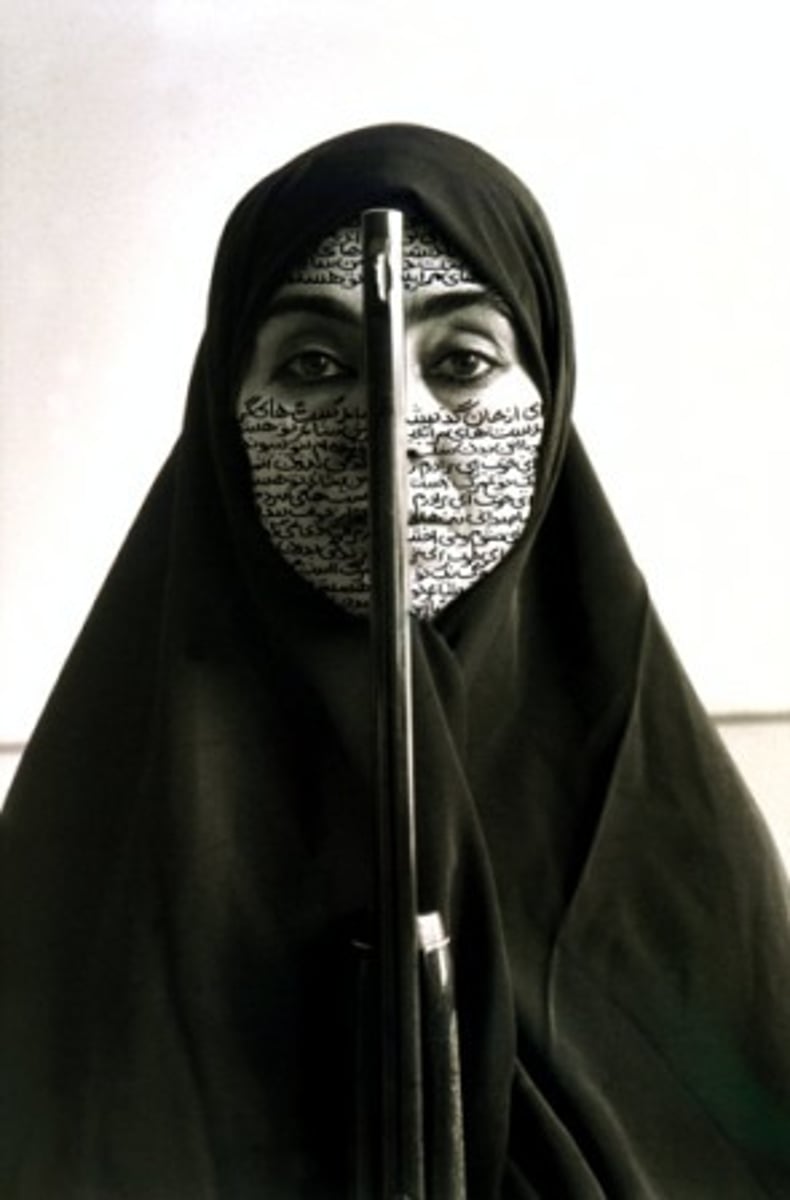
Untitled #228, from the History Portraits series 1990 CE
Cindy Sherman
Italy
Chromogenic color print
feminist artwork
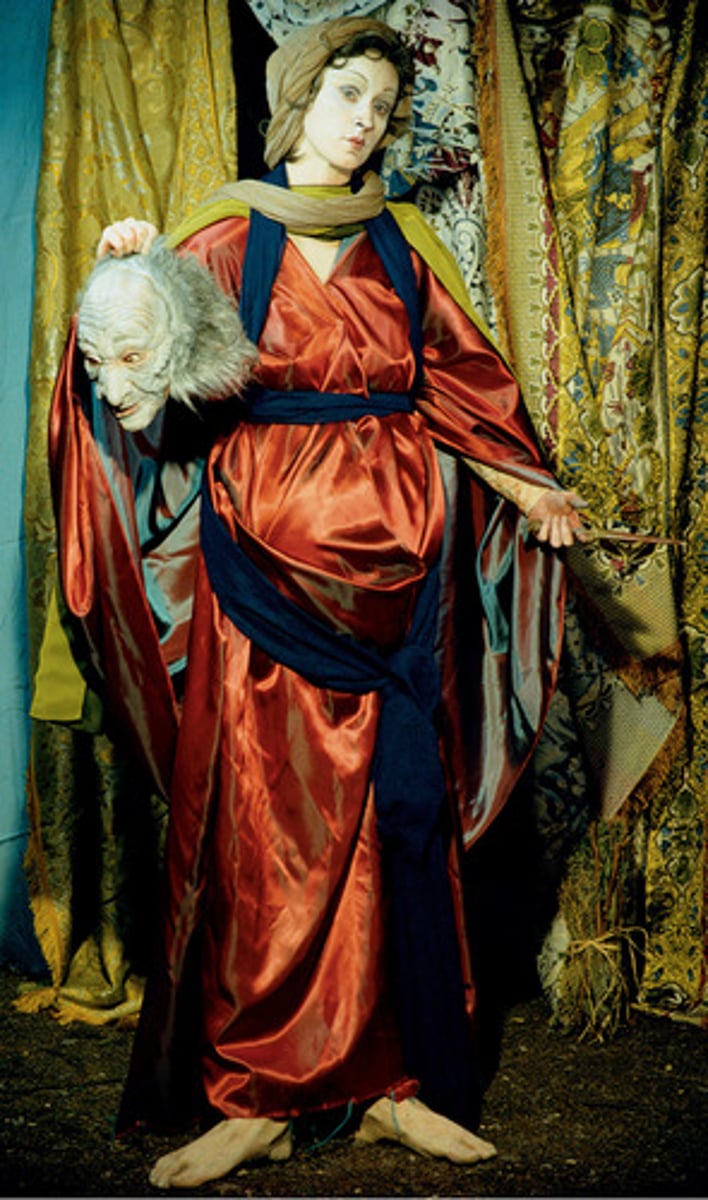
Conical Tower and Circular Wall of Great Zimbabwe 1000-1400 CE
Shona People
Zimbabwe
Granite Blocks
power, control, and religion
(tower for grains)

Great Mosque of Djenne (Founded 1200 CE, rebuilt 1906-07 CE)
Sudano-Sahelian
Mali
Adobe
Religious (Islamic)
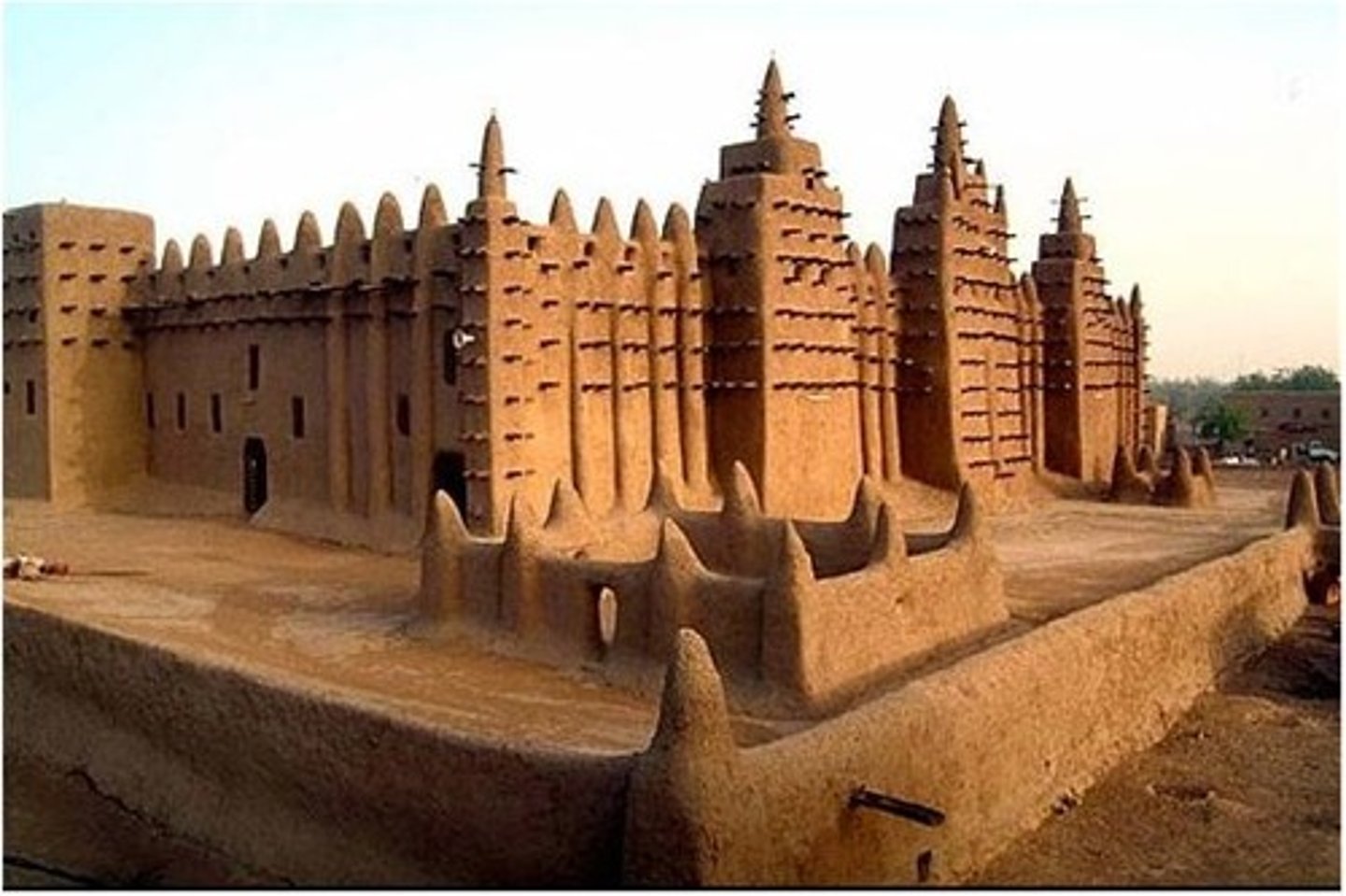
Wall Plaque from Oba's Palace 16th century
Edo peoples
Benin Empire, Nigeria
cast brass
power
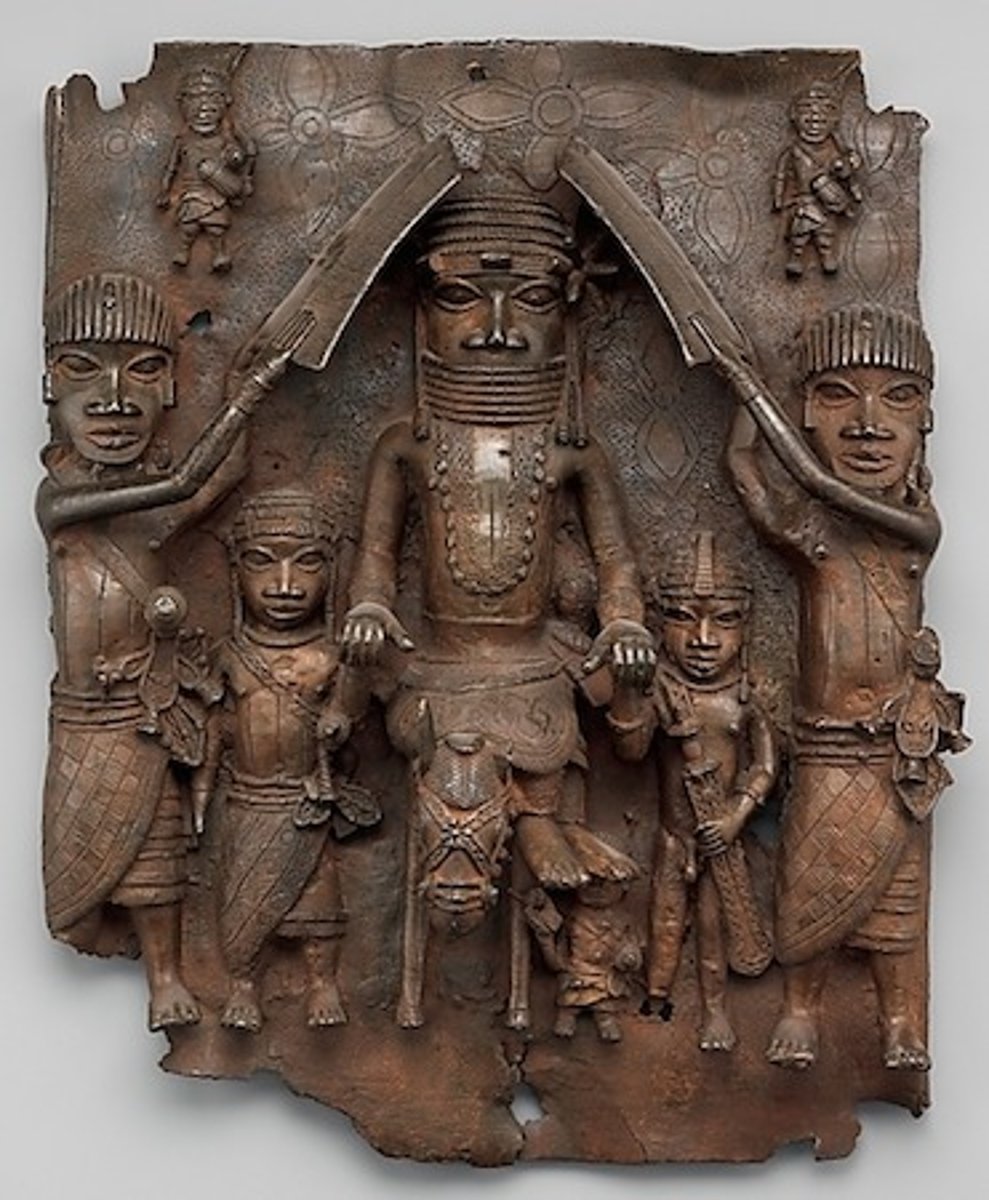
Sika Dwa Kofi (Golden Stool) c. 1700 CE
Ashanti Peoples
Ghana
Gold over wood and cast gold attachments
Religious

Ndop Portrait of King Mishe miShyaang maMbul 1760-1780 CE
Kuba Peoples
Democratic Republic of Congo
wood and camwood powder
commemorative (powerful and well respected ruler remembered in songs and statues)

Portrait Mask (Mblo) early 20th century
Owie Kimou, Baule Peoples
Ivory Coast
wood and pigment
secular masquerade
(Moya Yanso's likeness, commissioned and og worn by Kousame Ziarey)
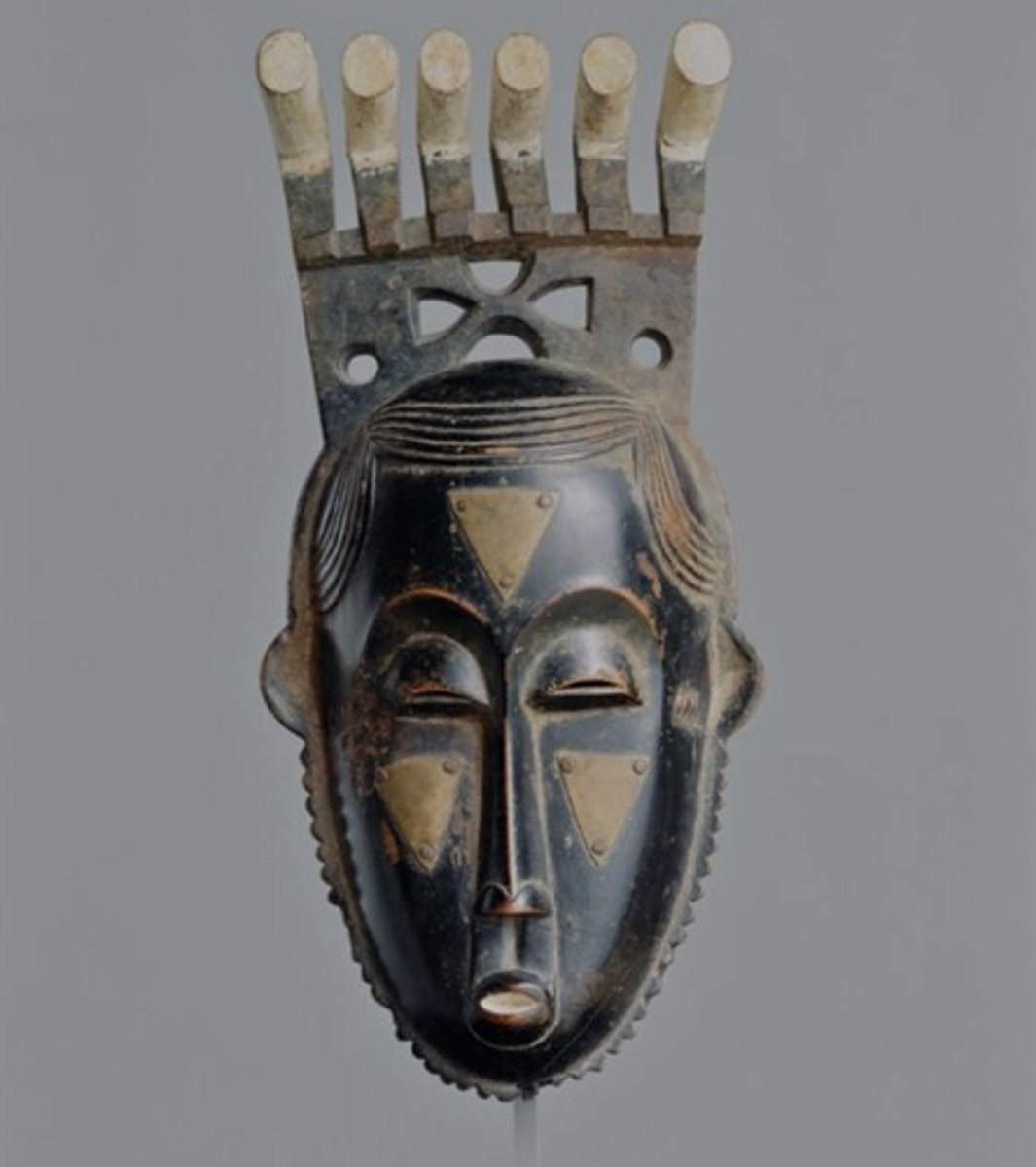
Female (Pwo) Mask late 19th- early 20th century
Chokwe peoples
Democratic Republic of Congo
wood, fiber, pigment, metal
to honor young fertile women (and those who have given birth)
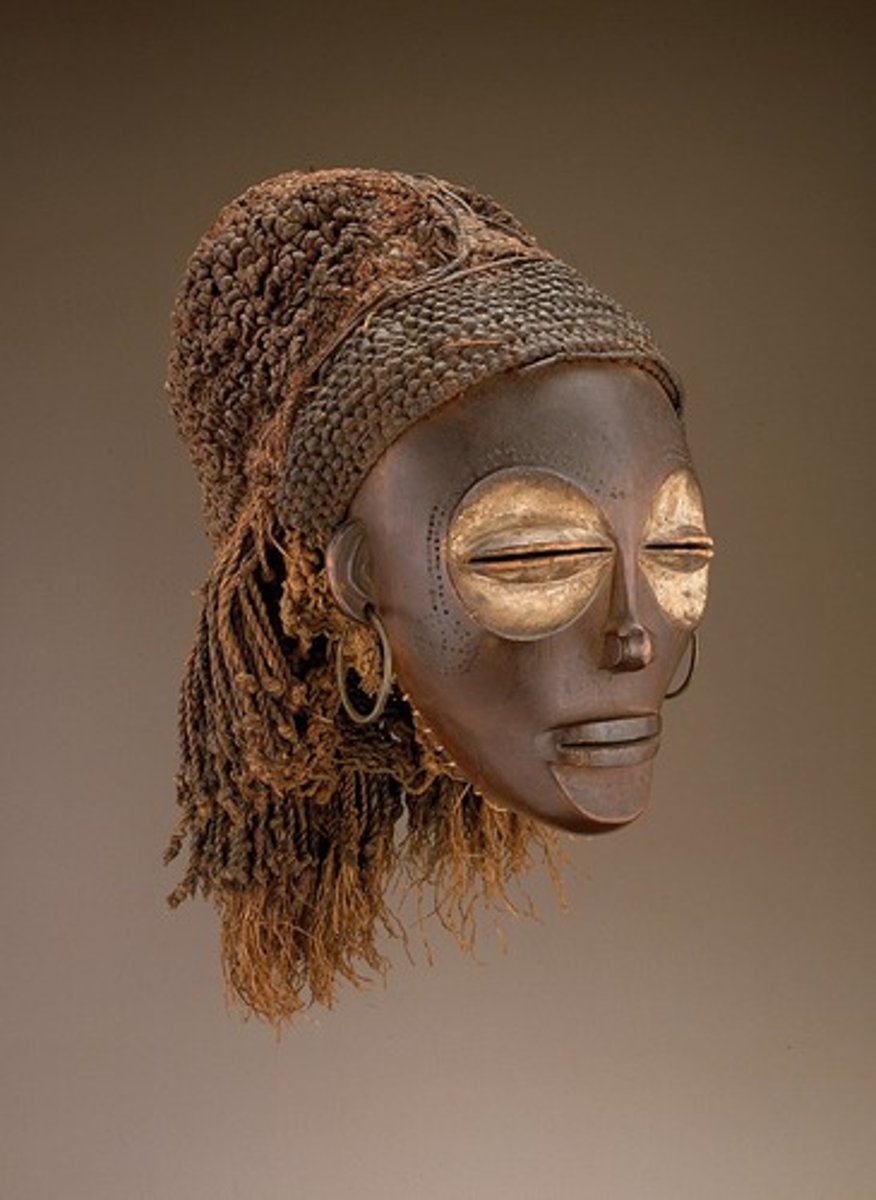
Bundu Mask late 19th-20th century
Mende/Sherbro peoples
Sierra Leone, Moyamba region
wood, cloth, and fiber
ceremonial
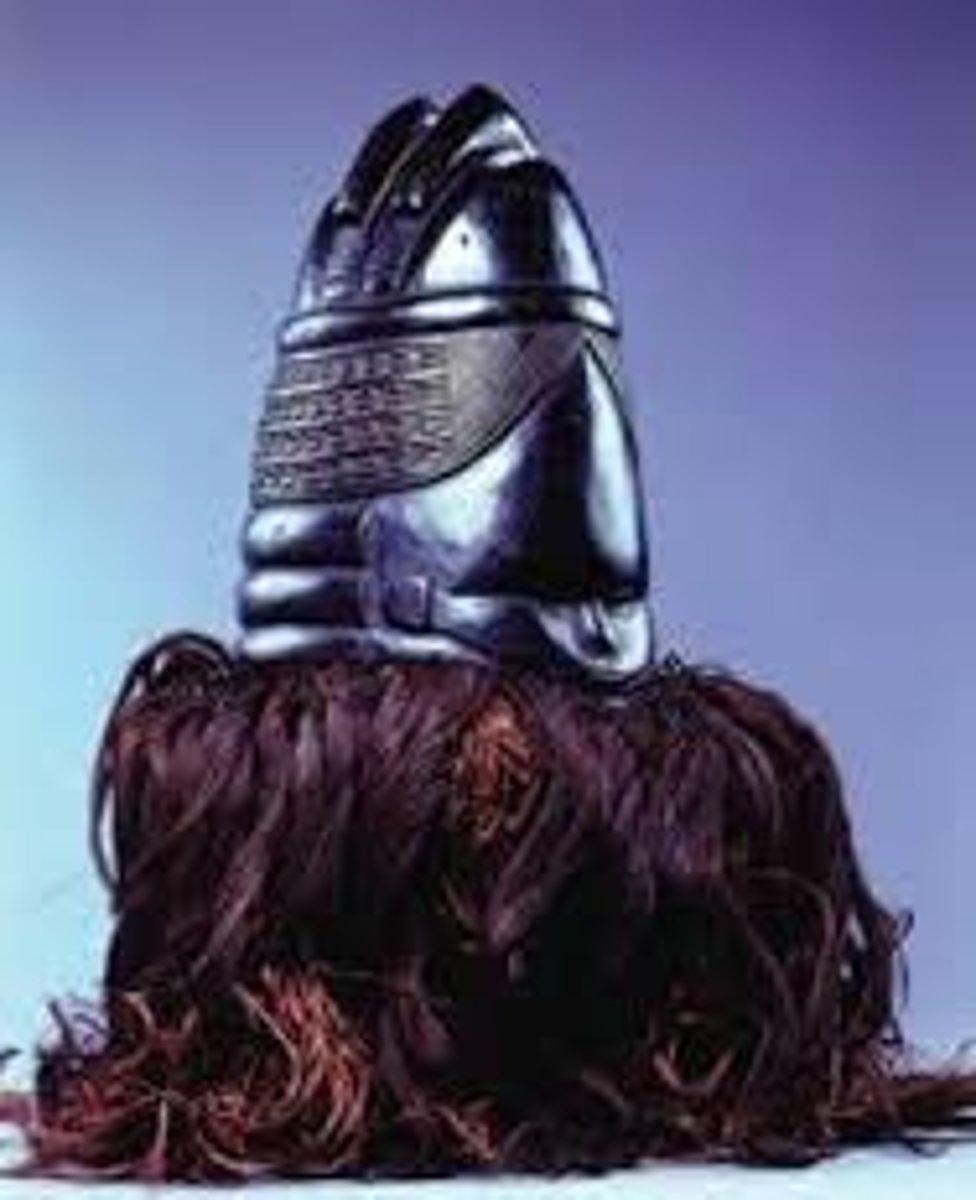
Power Figure (nkisi nkondi) late 19th century
Kongo peoples
Democratic Republic of Congo
wood and metal
spiritual
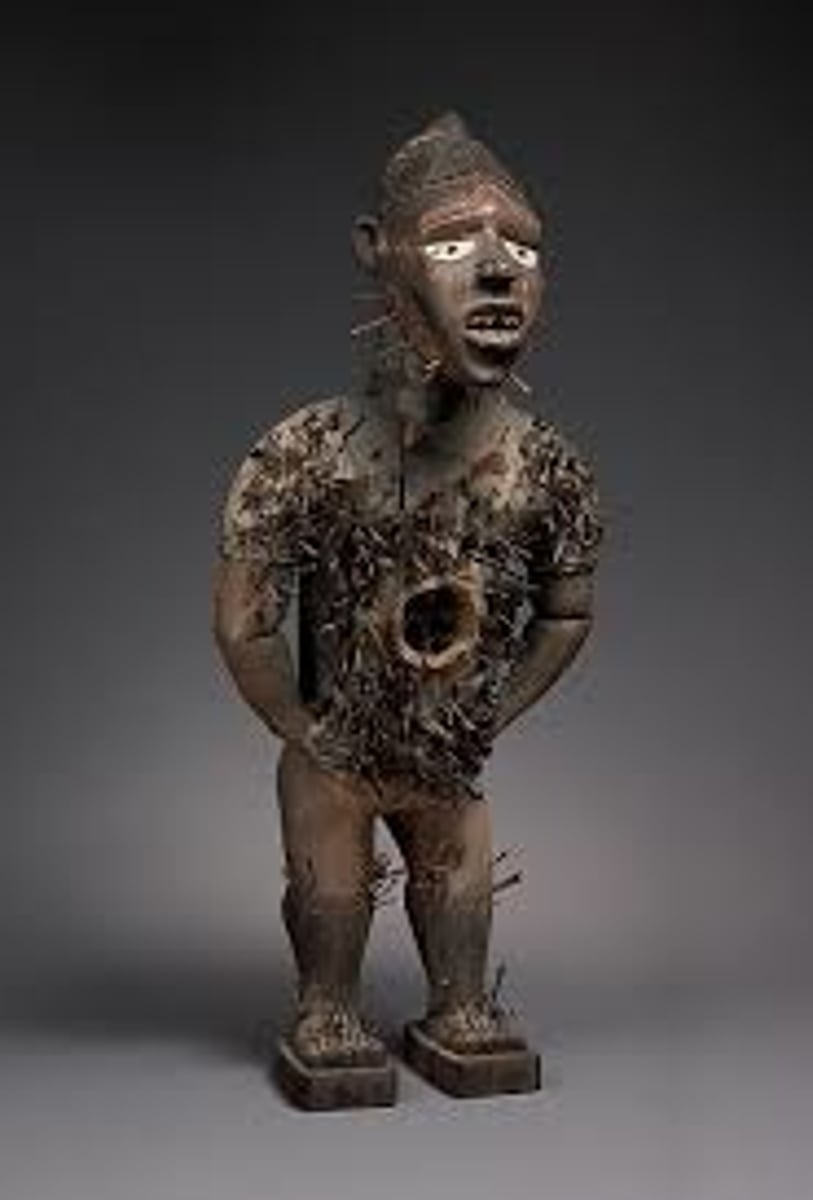
Ikenga (shrine figure) 19th to 20th century
Igbo Peoples
Nigeria
wood
spiritual (shrine in the home)
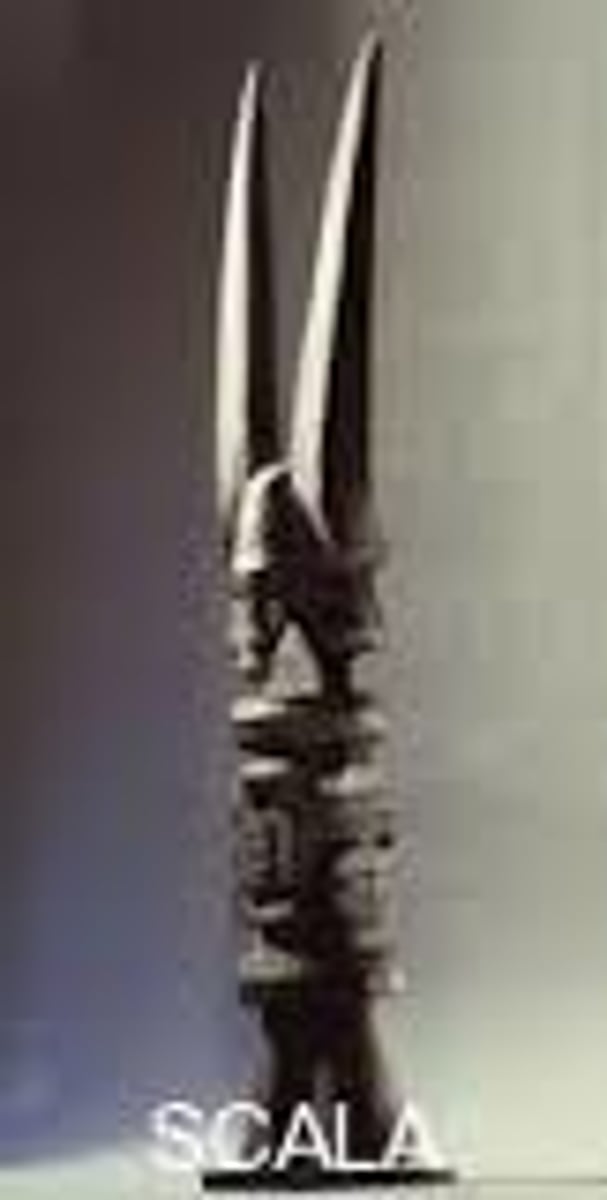
Lukasa 19th-20th century
Mbudye society, Luba peoples
Democratic Republic of Congo
wood, beads, metal
record keeping item (meant to be read/interpreted by skilled masters)
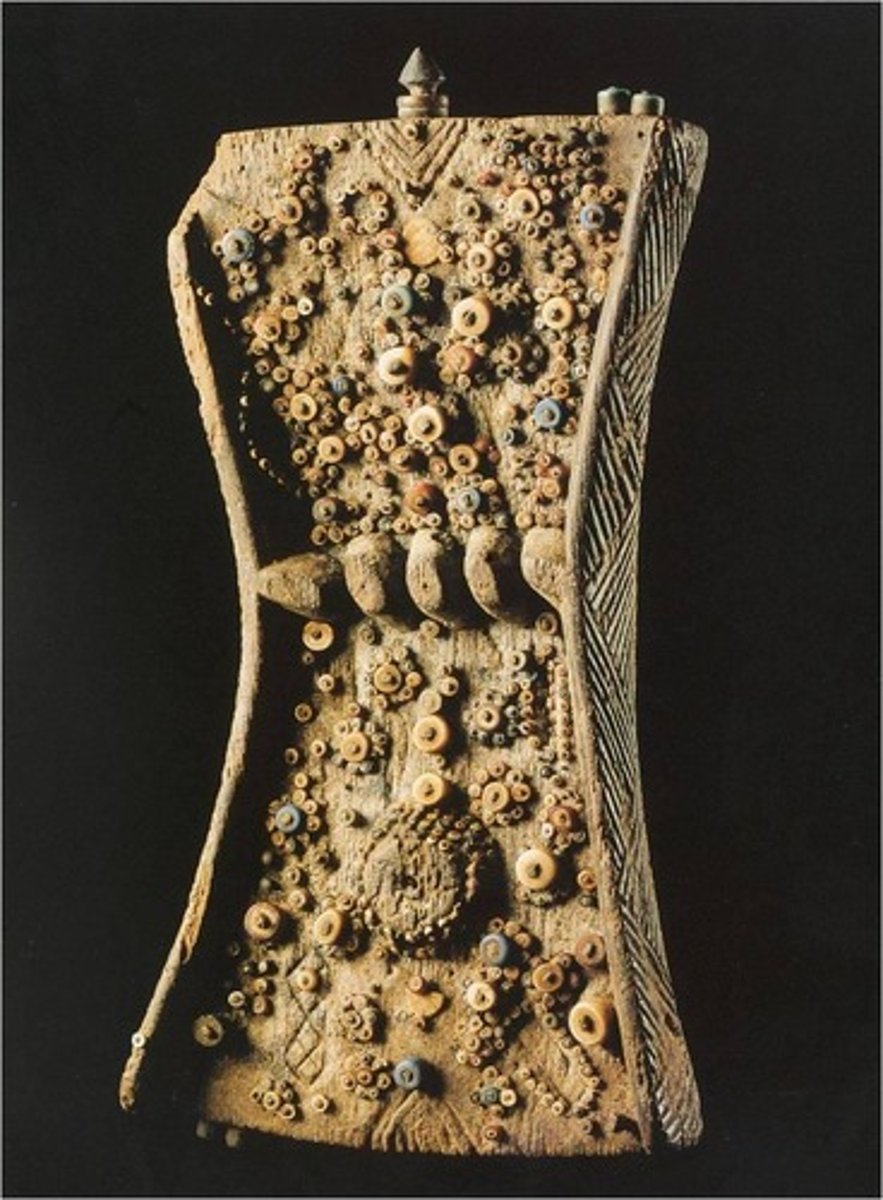
Elephant (Aka) Mask 19th-20th century
Bamileke Peoples
Cameroon
cloth, beads, raffia, fiber
worn and danced to show and honor the power of the kings
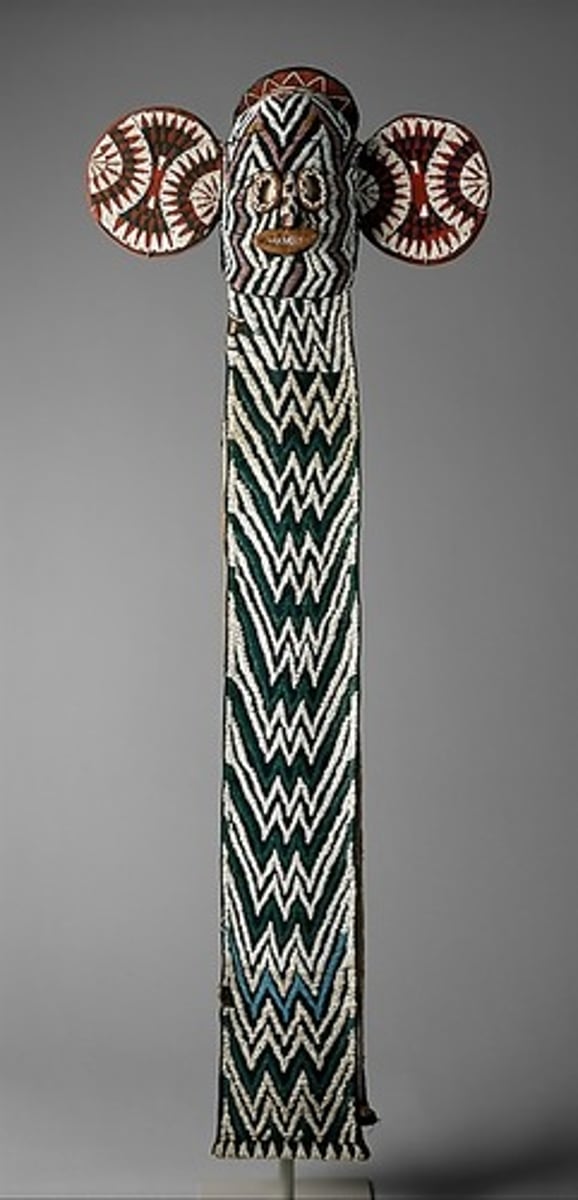
Reliquary figure (byeri) mid 18th-19th century
Fang peoples
Gaboon
wood and iron
spiritual (its a reliquary)

Veranda Post of Enthroned King and Senior Wife (Opo Ogoga) 1910-1914 CE
Olowe of Ise, Yoruba Peoples
Ekiti region, Nigeria
wood and paint
power

Great Stupa at Sanchi 300-100 BCE
India
stone masonry
funerary/Religious/Spiritual
(local beliefs with Buddhist)
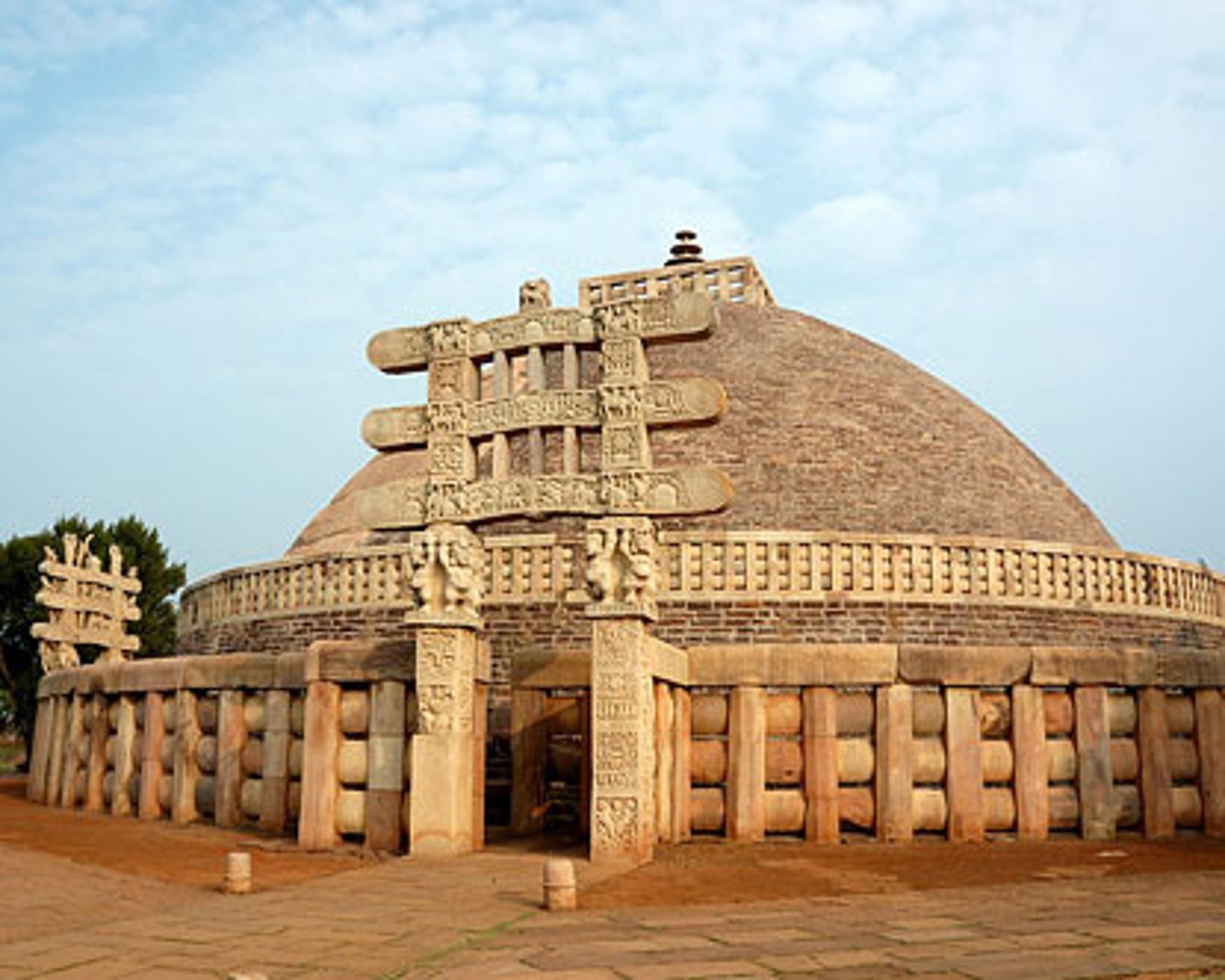
Terracotta Warriors from the Mausoleum of the first Qin Emperor of China circa. 221-209 BCE
China
painted terracotta
Funerary, made for Qin Shi Huang (Built Great Wall, unified China)
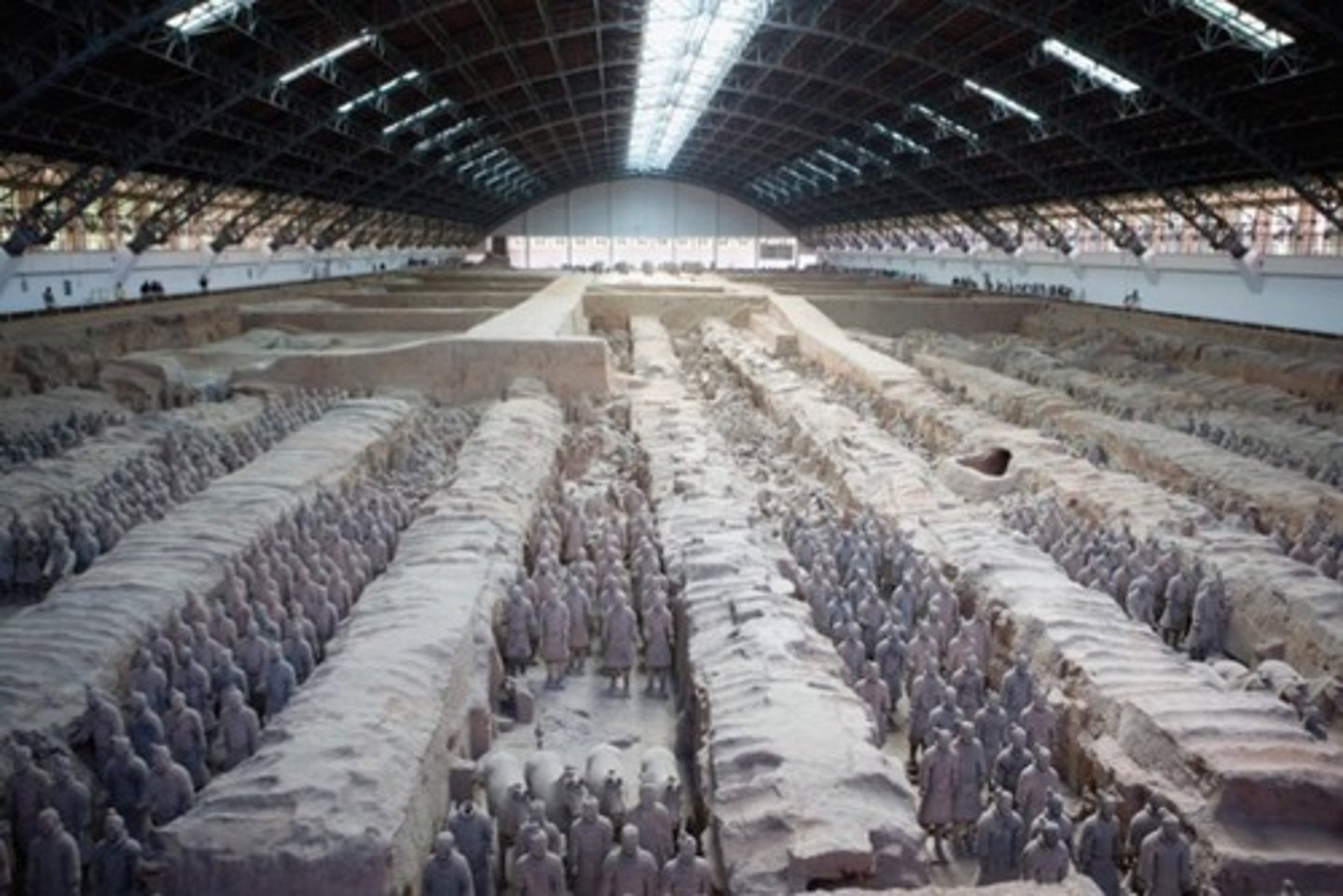
Funeral Banner of Lady Dai 180 BCE
China
painted silk
funerary
depicts lots of animals, formal, symmetry, narrative piece
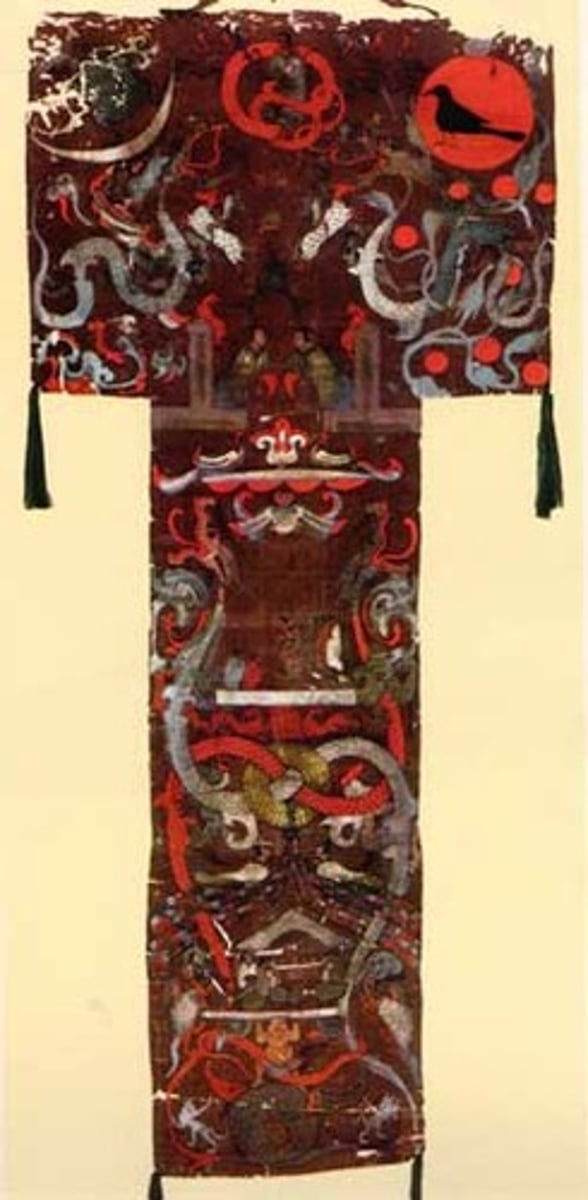
Longmen Caves 493-1127 CE
China, Tang Dynasty
limestone
spiritual (Buddhist)
over 100k Buddhas, 2300 caves and niches, worked on over time

Gold and Jade Crown 400-500 CE
Korea, Silla
gold and Jade metalwork
ceremonial, show of power
depicts Tree of Life
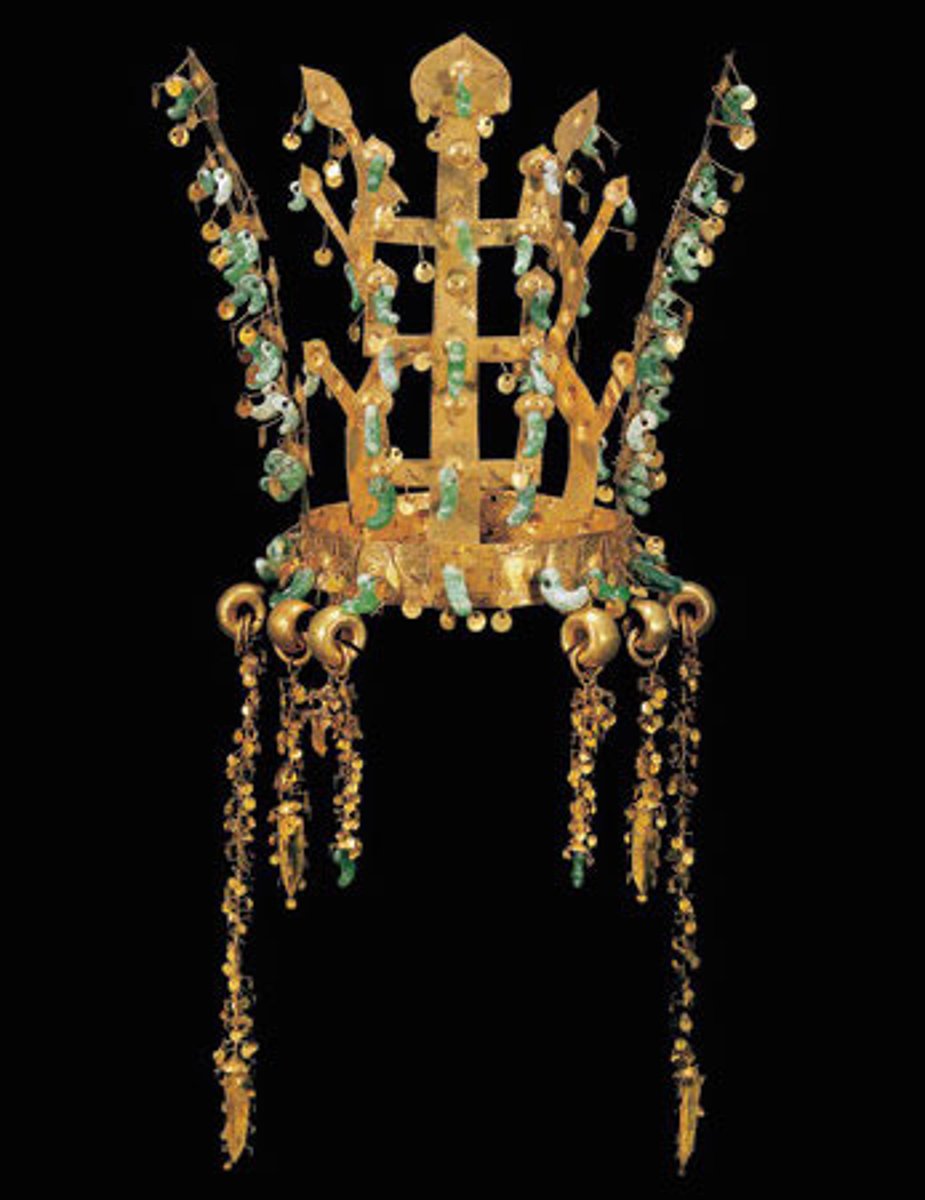
Travelers Among Streams and Mountains 1000 CE
Fan Kuan
China, Neo Confucianism
ink on silk hanging scroll
sense of awe in nature
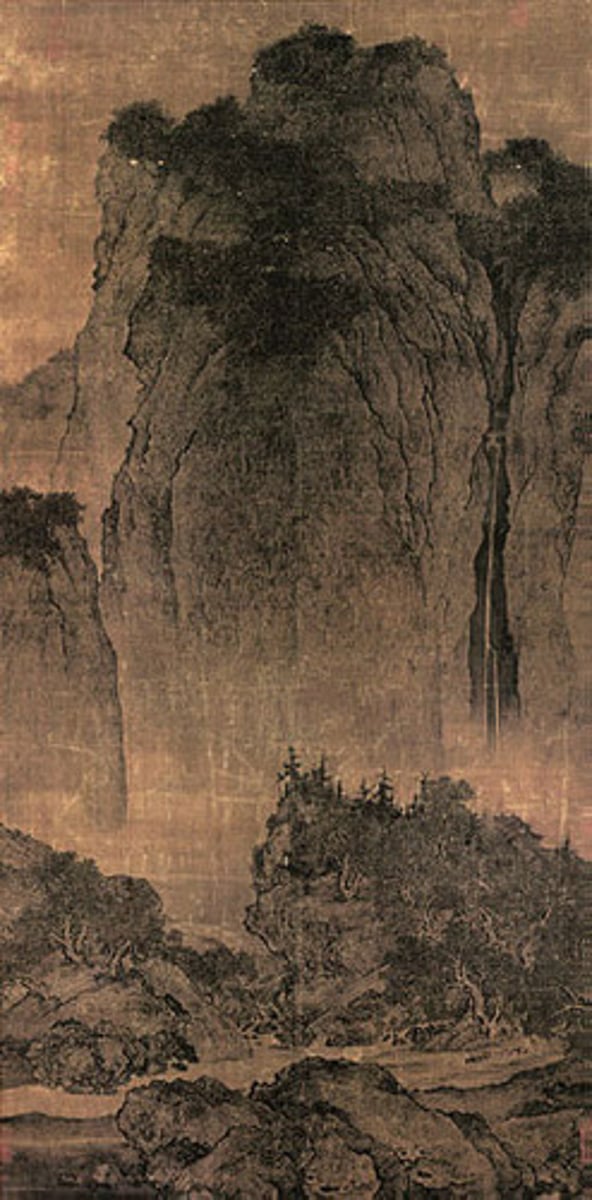
The David Vases 1351 CE
China, Yuan Dynasty
white porcelain w/ cobalt-blue underglaze, w/ clear glaze
dedicated for Daoist temple as dedication
named after collector Sir Percival David
shows vast trade network (porcelain from kaolin, cobalt from Ian, and others from Mongol Empire)
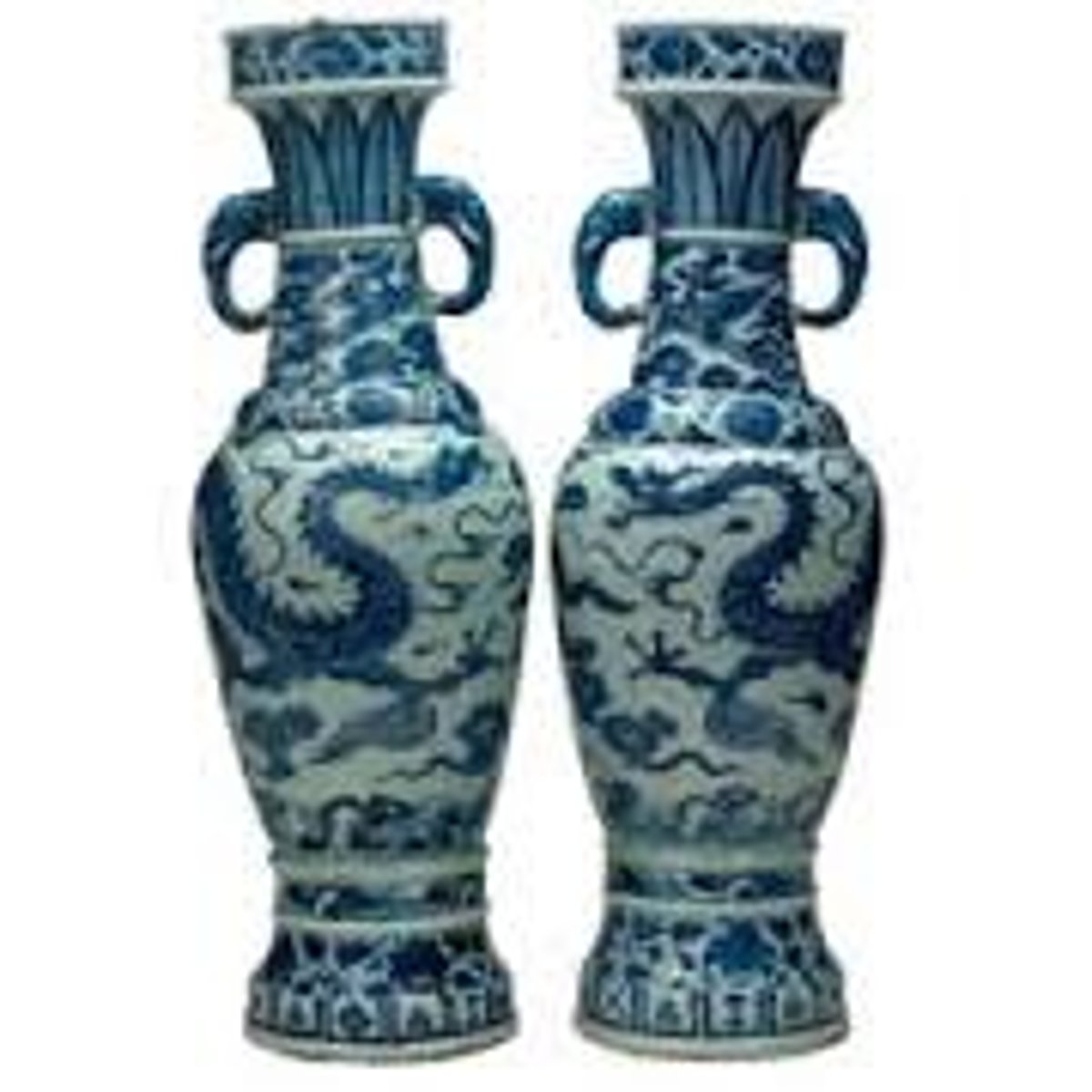
Todai-ji 743 CE, rebuilt c. 1700 CE
Japan, Buddhist
wood, bronze, ceramic, copper
political, spiritual
known for Vairocana Buddha Statue (took all copper in Japan)
no nails!

Night Attack on the Sanjo Palace 1250-1300 CE
Japan, Kamakura Period
ink and color on paper
historical
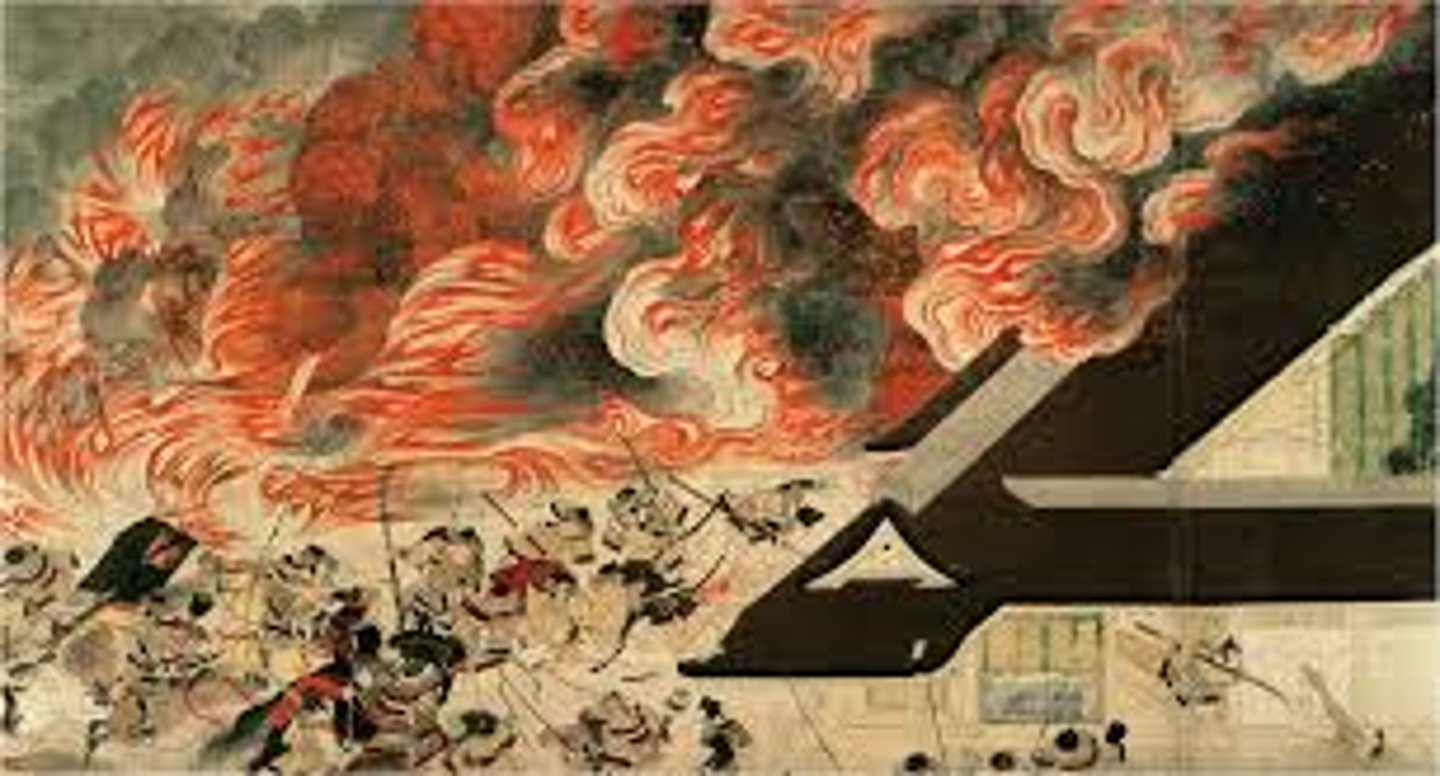
Ryoan-ji (peaceful Dragon Temple) c. 1480 CE, rock garden 1700s CE
Japan, Buddhist
gravels, clay, stone
spiritual (Zen Buddhist)
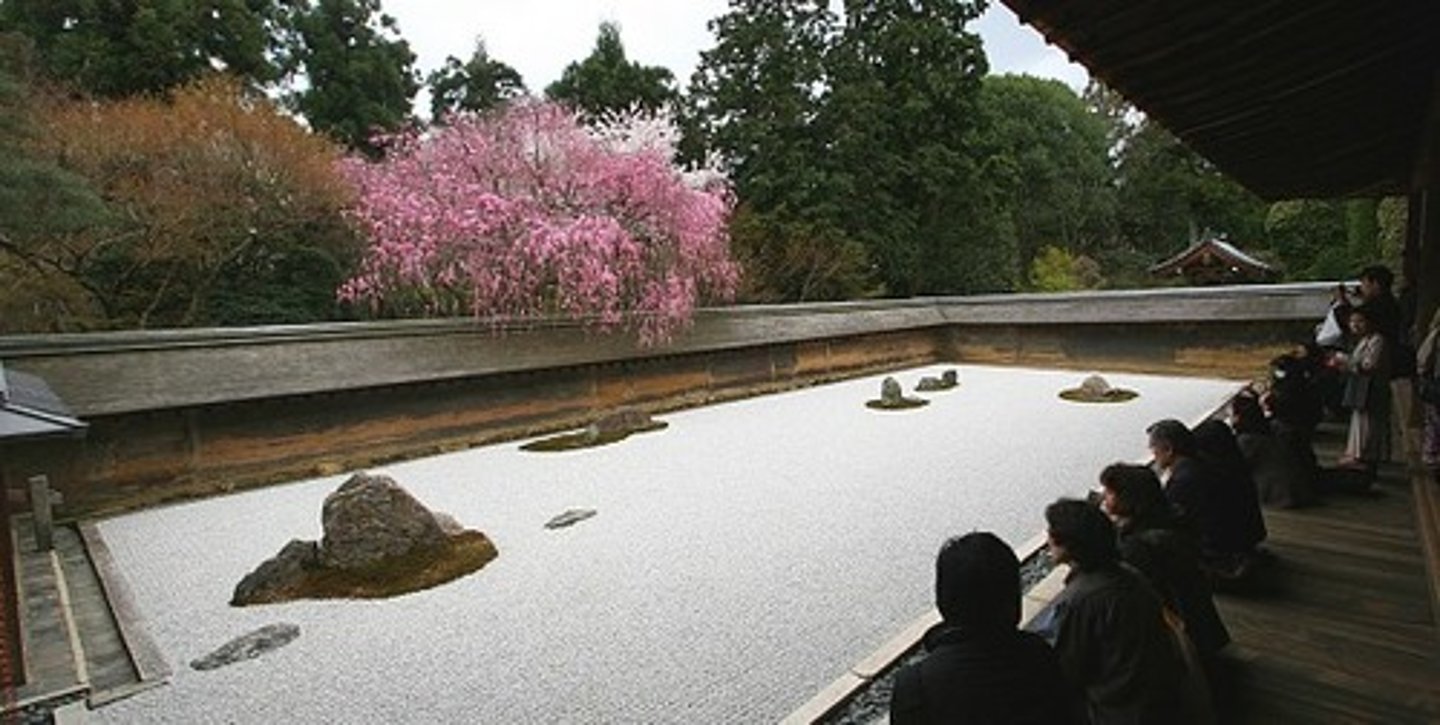
White and Red Plum Blossoms 1710-1716 CE
Ogata Korin
Japan
ink, watercolor, and gold leaf on paper screens
to be art
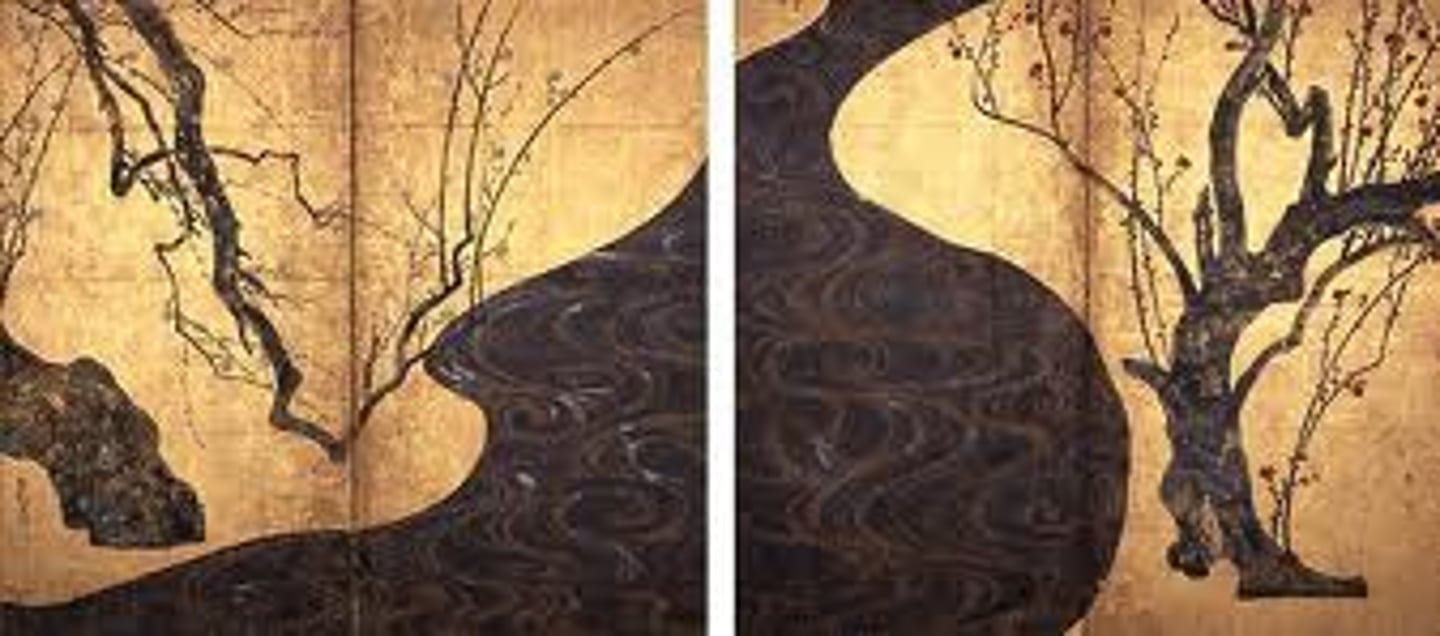
The Great Wave (Under the Wave off Kanagawa) 1830-1833 CE
Katsuhika Hokusai
Japan
woodblock print
to be art
influenced by Dutch artists
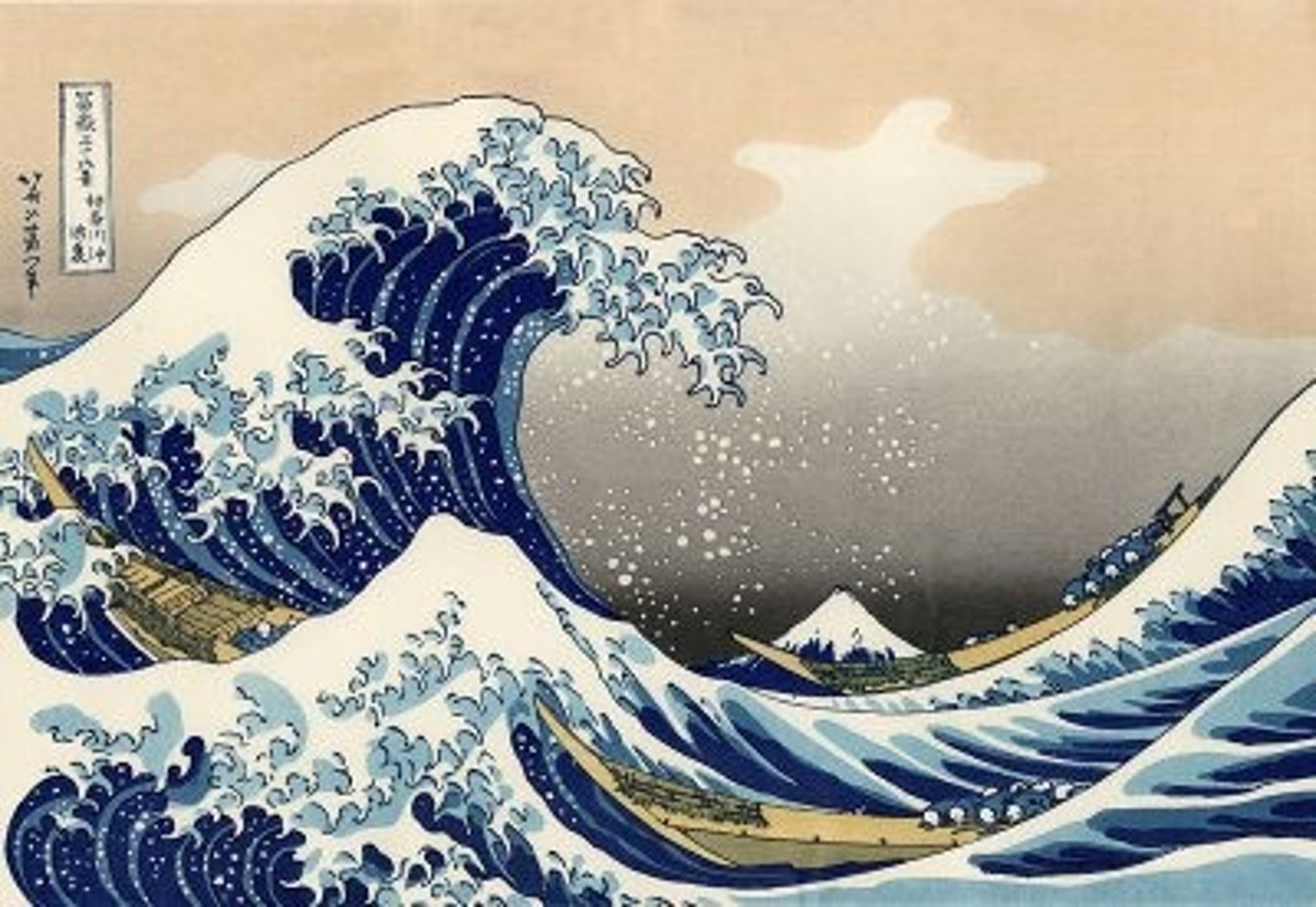
Shiva Nataraja as Lord of Dance c. 1000s CE
India
cast bronze
religious, Hindu
lots of symbolism
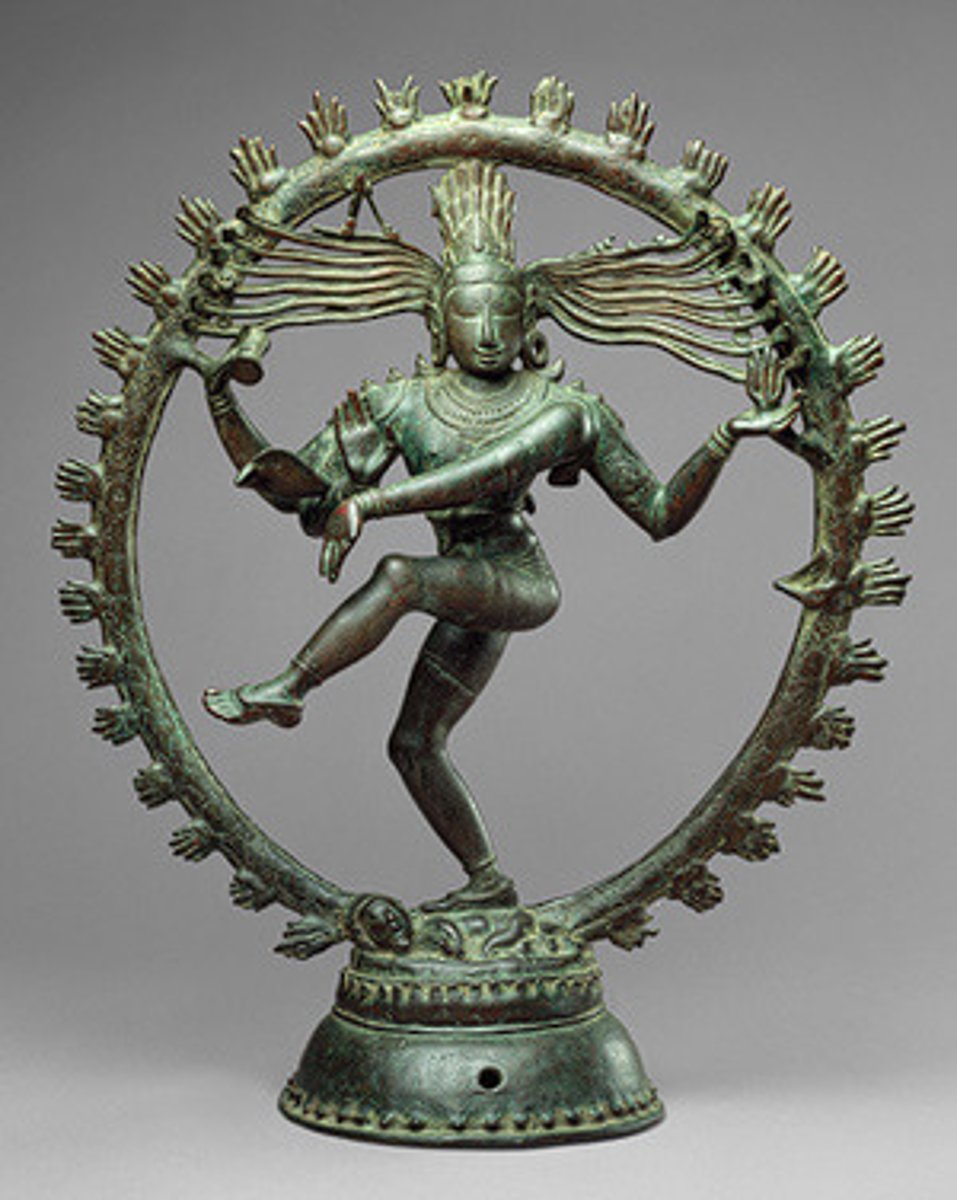
Lakshmana Temple 930-950 CE
India, Chandella Dynasty
Sandstone
Religious, Hindu
based off of mountains
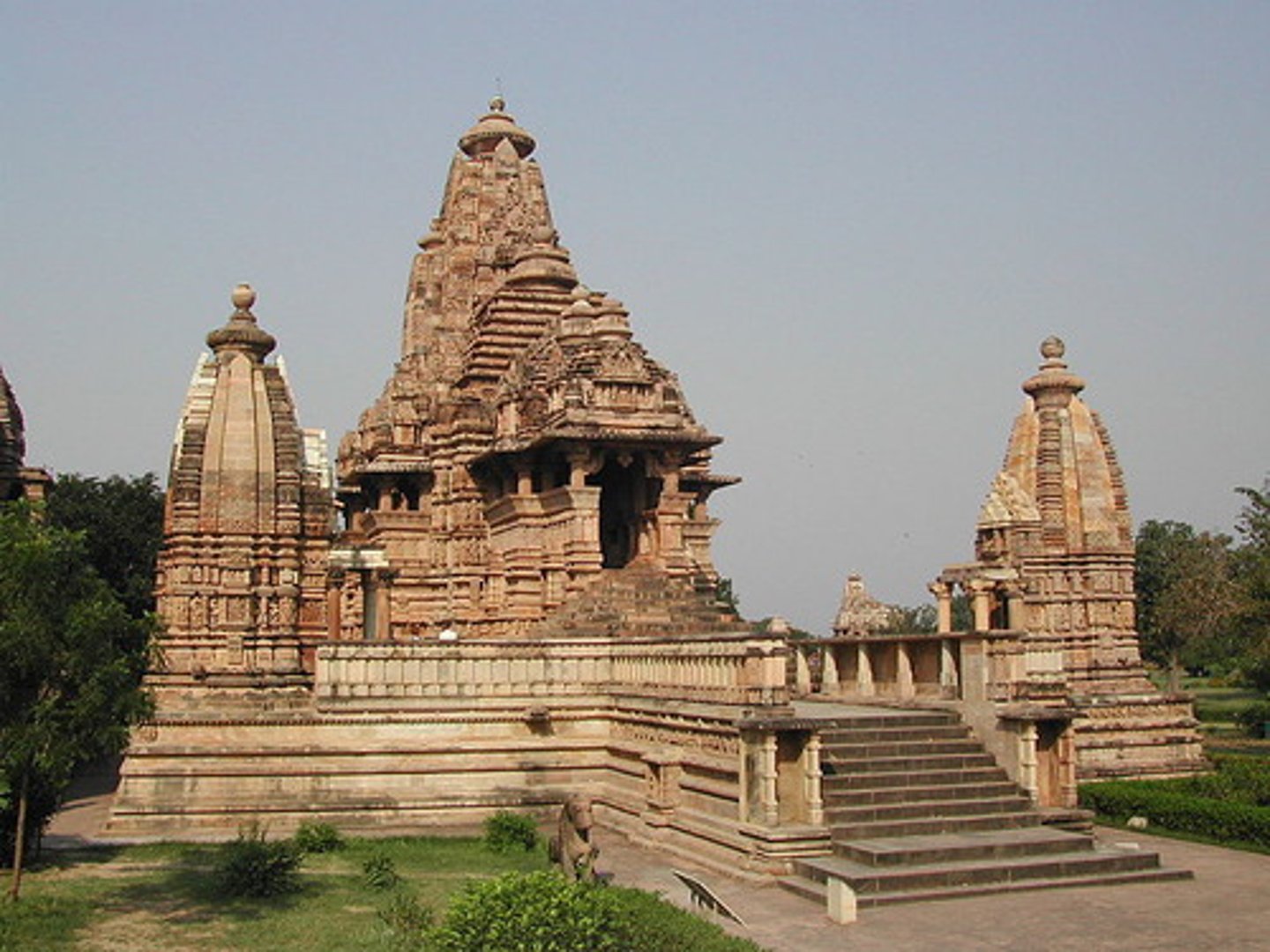
Borobudur Temple c. 800 CE
Gunadharma
Indonesia
andesite
Religious, Buddhist
shaped like a mountain, covered in volcanic ash and rediscovered in 1800s
mandala-like floorplan
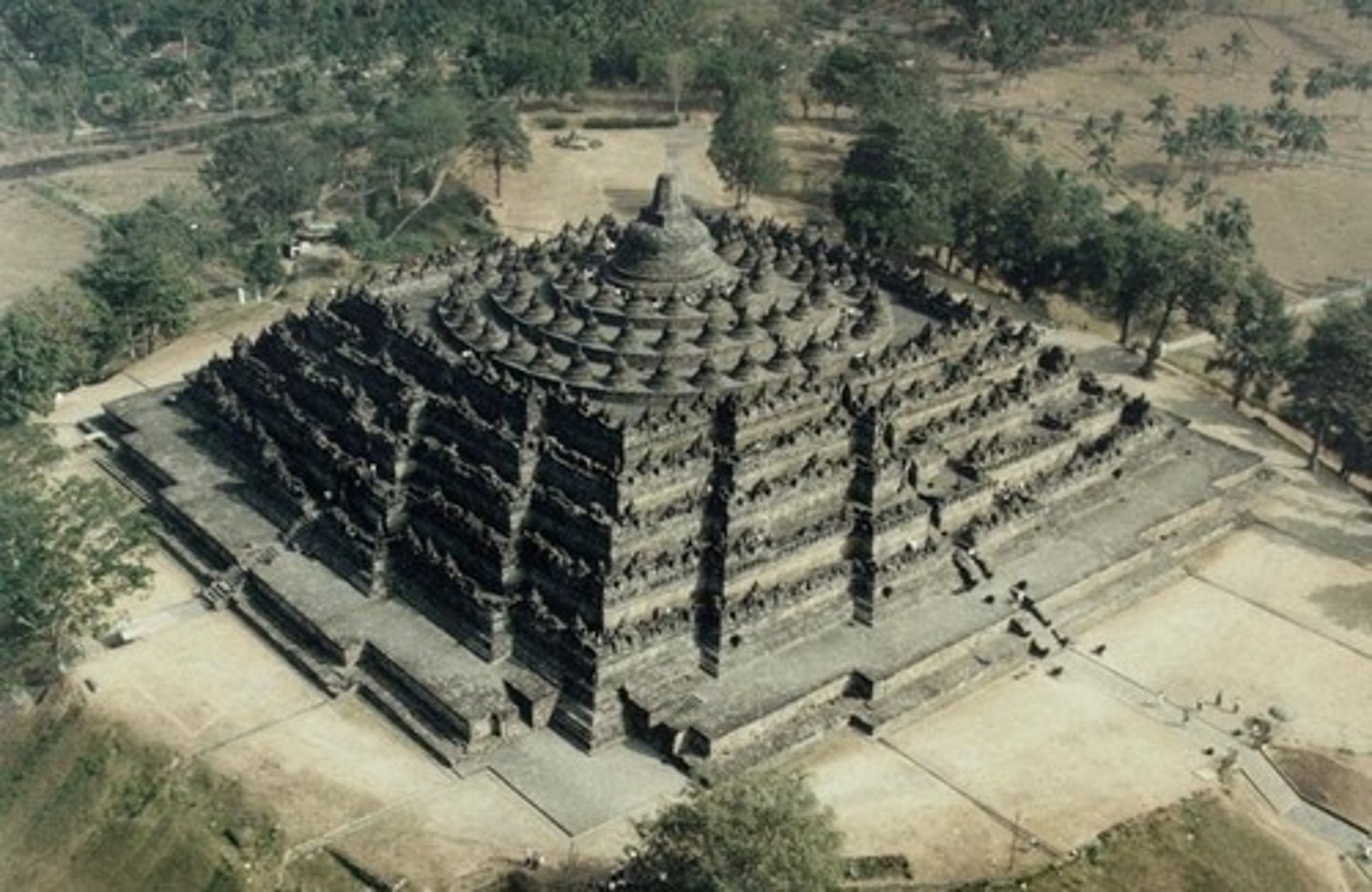
Angkor Wat 116-1150 CE
Cambodia
sandstone
Religious (Hindu, dedicated to Vishnu, but now Buddhist)
was lost to jungle, but reclaimed

Jahangir Preferring a Sufi Shaikh to Kings c.1620 CE
Bichitir
India, Mughal Empire
watercolor, gold, ink on paper
Political

Taj Mahal 1632-1653 CE
Ustad Ahmad Lahori
India, Mughal Dynasty
white marble
Funerary
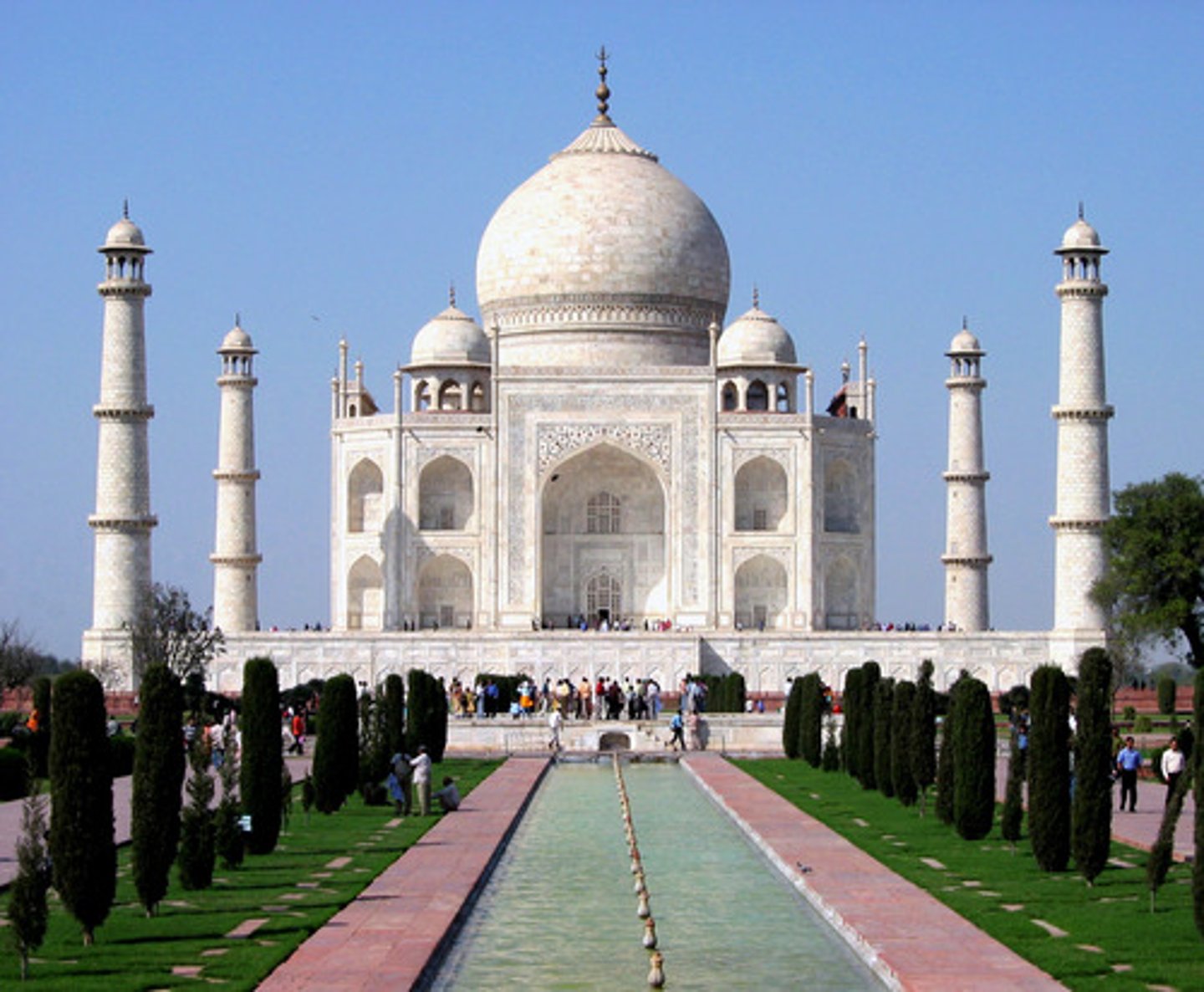
Portrait of Sin Sukju 1417-1475 CE
Imperial Bureau of Painting
Korea
Hanging Scroll (ink and color on silk)
Meritorious portrait
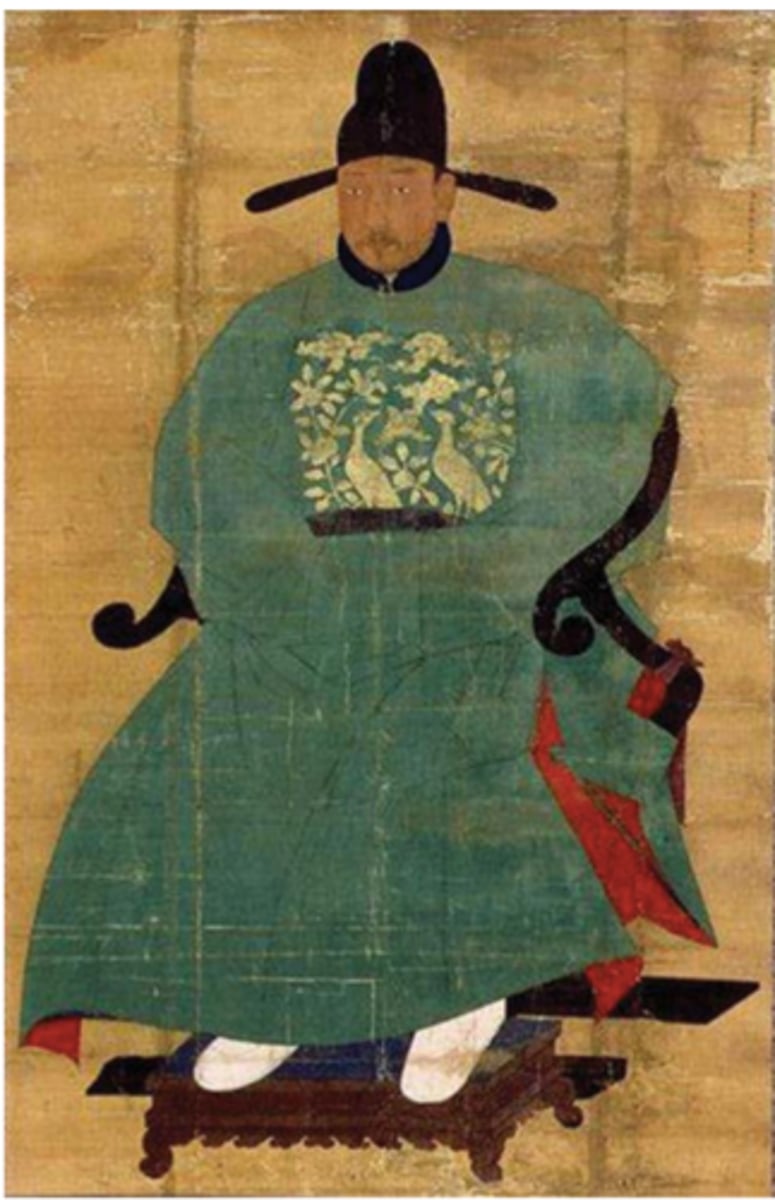
Forbidden City (Finished in 15th century CE), Finished in 1420 CE
China, Ming Dynasty
stone masonry, marble, brick, wood, ceramic tile
power and authority
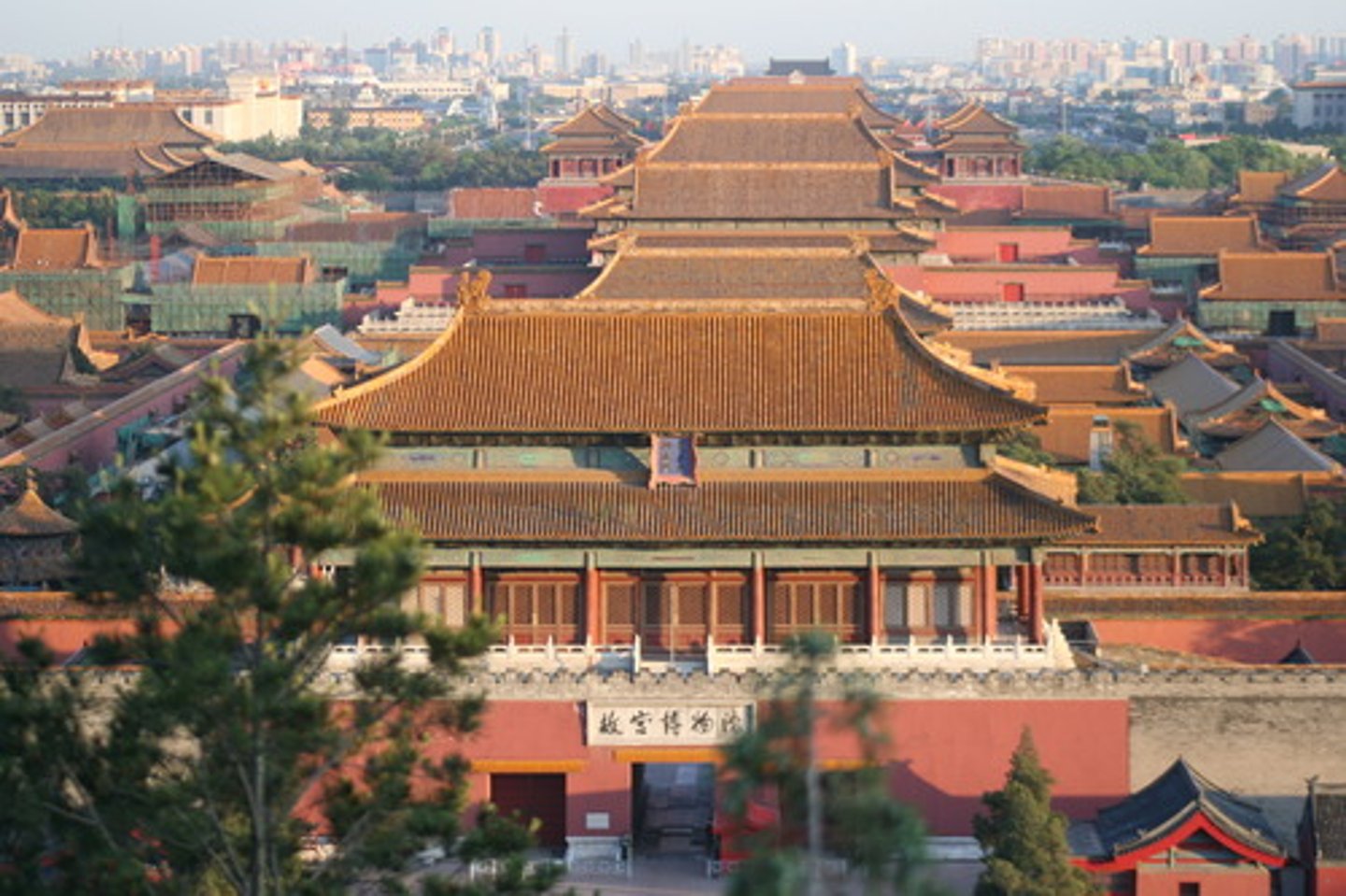
Chairman Mao en Route to Anyuan c. 1969 CE
China
color lithograph
Propaganda
(en route to a miners strike)

circumambulation
In Buddhist worship, walking around the stupa in a clockwise direction
bi
in ancient China, jade disks carved as ritual objects for burial with the dead. They were often decorated with piercings that extended entirely through the object, as well as with surface carving
bodhisattva
in Buddhist thought, a potential Buddha who chooses not to achieve enlightenment in order to help save humanity
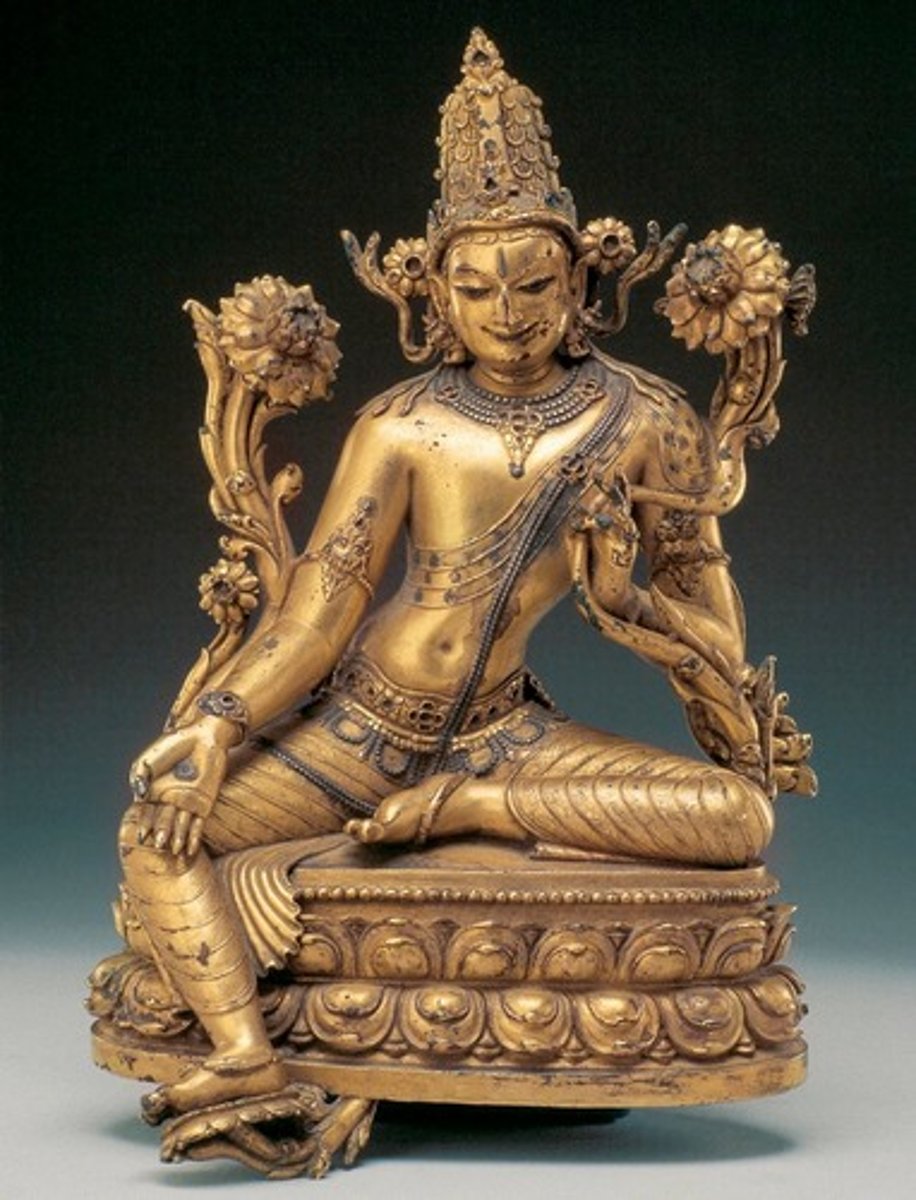
Buddha
Means "Enlightened One." He is said to have renounced his worldly possessions and taught of a way to overcome suffering.
(Siddhartha Gautama)
Iconoclasm
Opposing or even destroying images, especially those set up for religious veneration in the belief that such images represent idol worship.
mandorla
an almond-shaped nimbus surrounding the figure of christ or other sacred figure
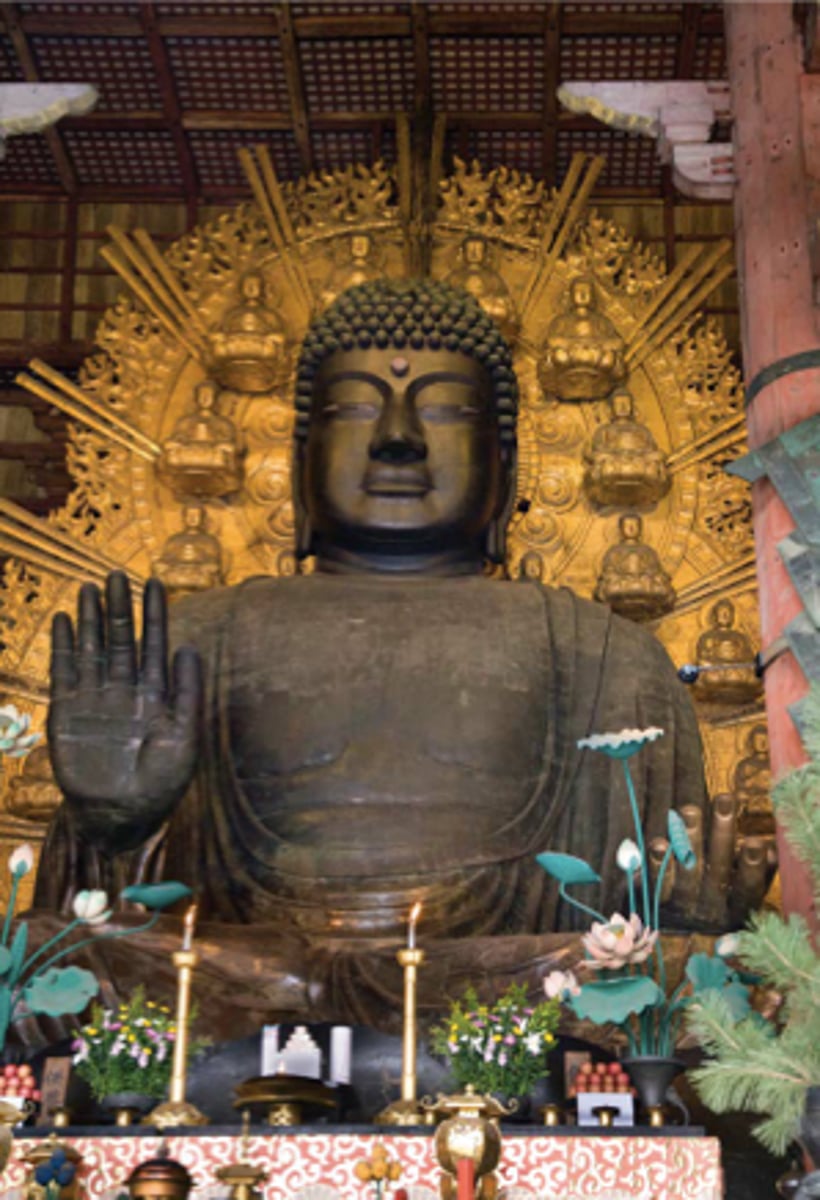
mudra
In Buddhist and Hindu iconography, a stylized and symbolic hand gesture. Right hand over the left, palm upward, in the lap
nirvana
in Buddhism, ultimate reality, the end of the self and a reunion with the Great World Soul
Shakyamuni
the sage of the Shakyas, Shakya being the name of the tribe/clan to which his family belonged
Stupa
a large mound shaped Buddhist shrine
torana
gateway in the stone fence around a stupa, located at the cardinal points of the compass
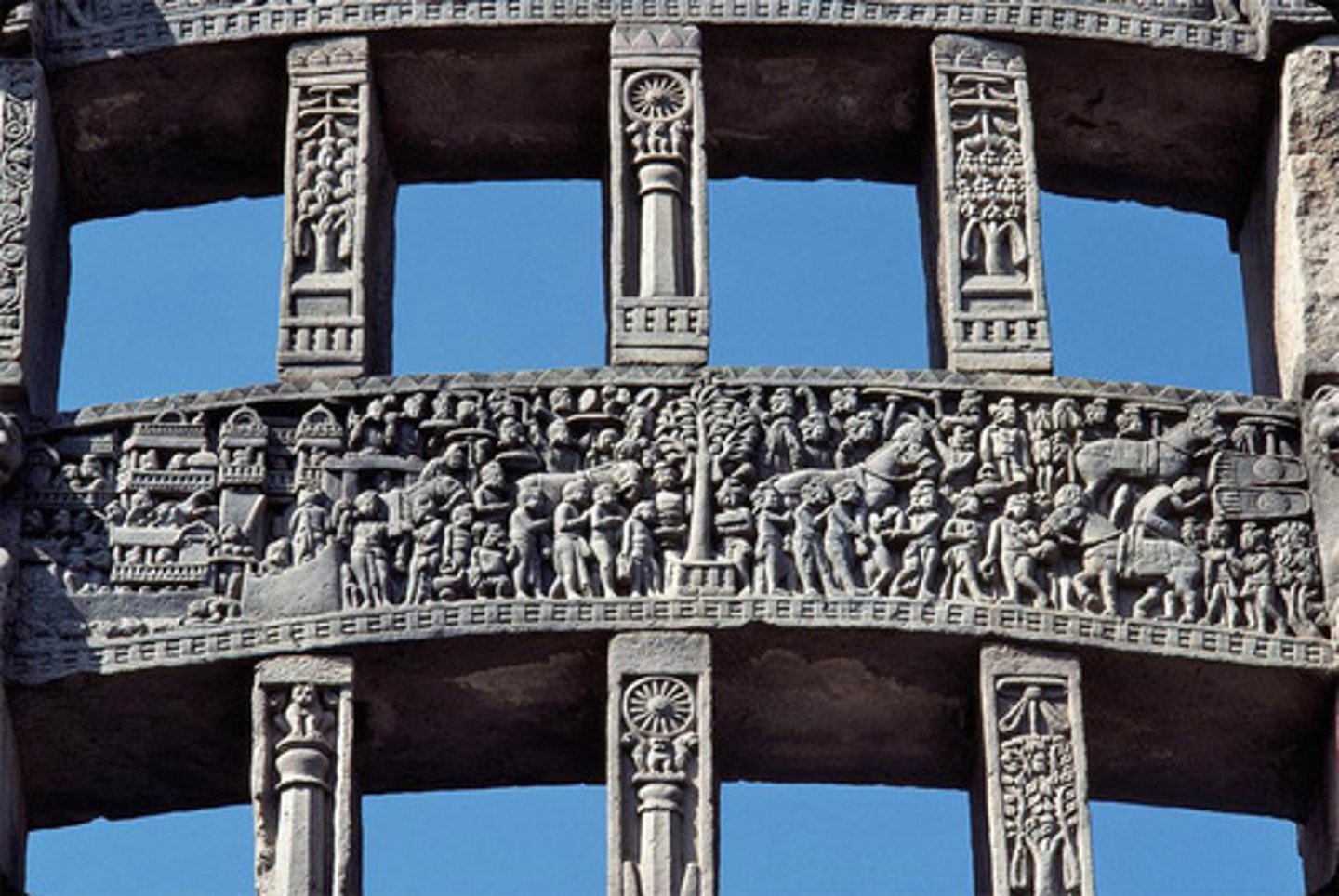
Urna
a circle of hair, usually symbolized as a dot, between the eyebrows of a Hindu or a Buddhist figure.
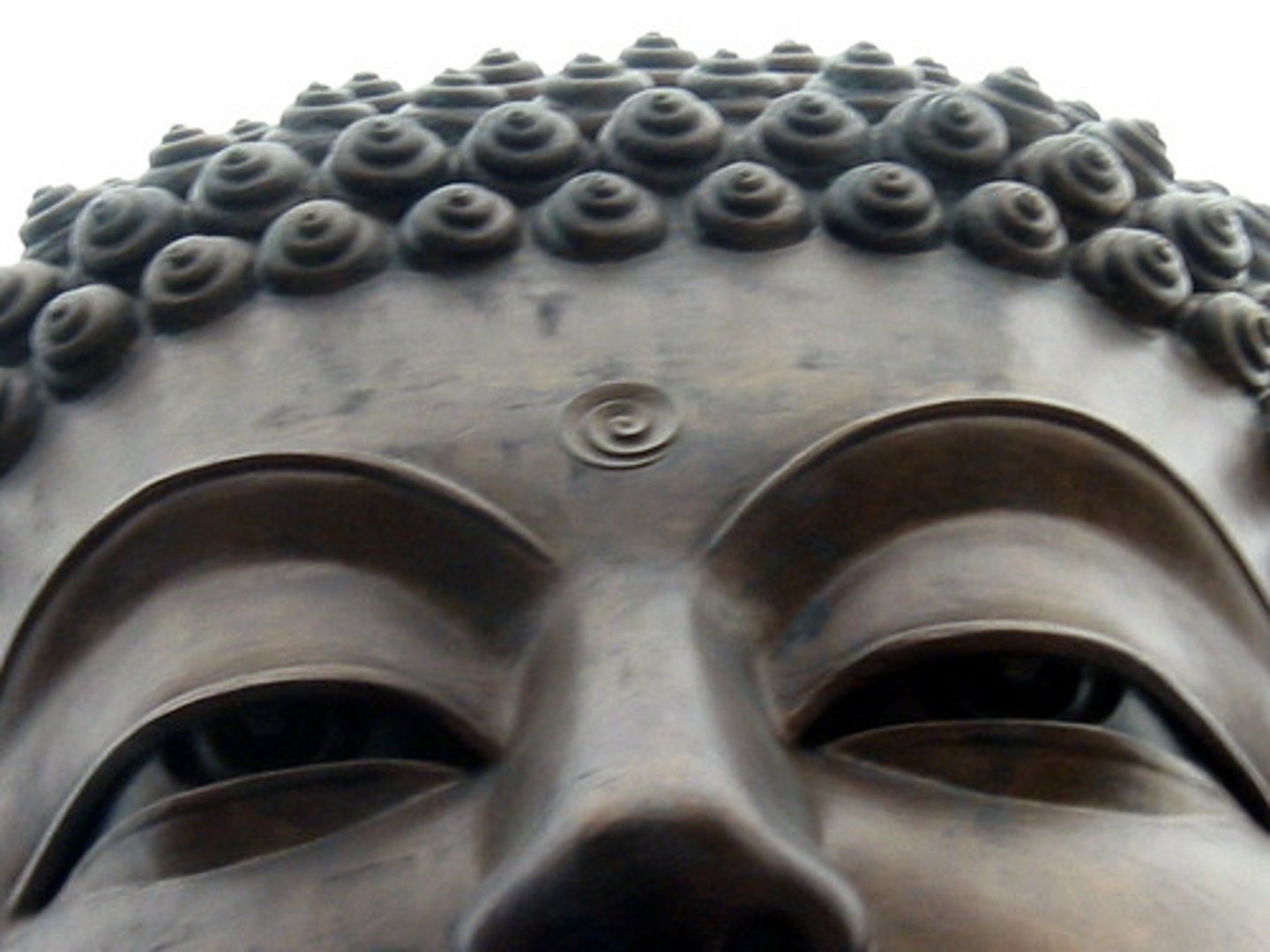
Ushinisha
a knot of hair, at the top of the head, one of the lakshanas of the Buddha